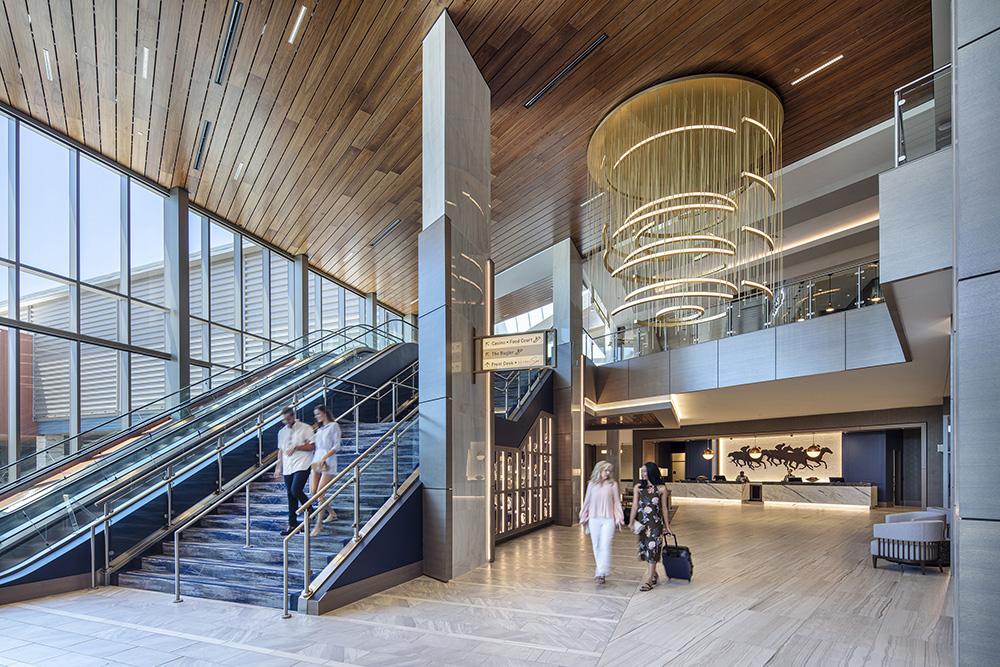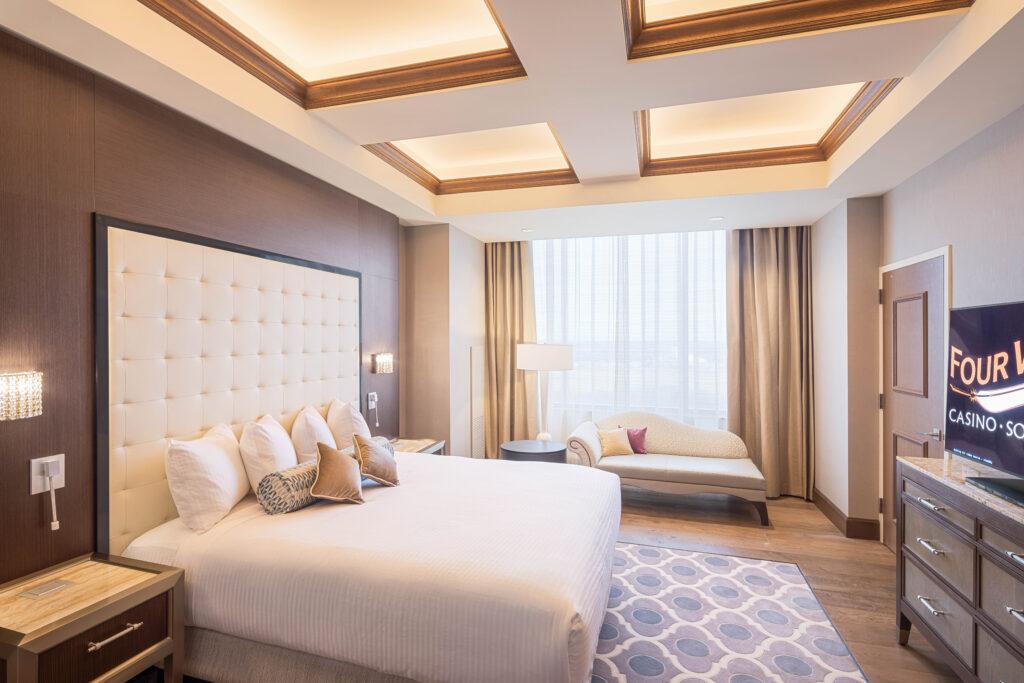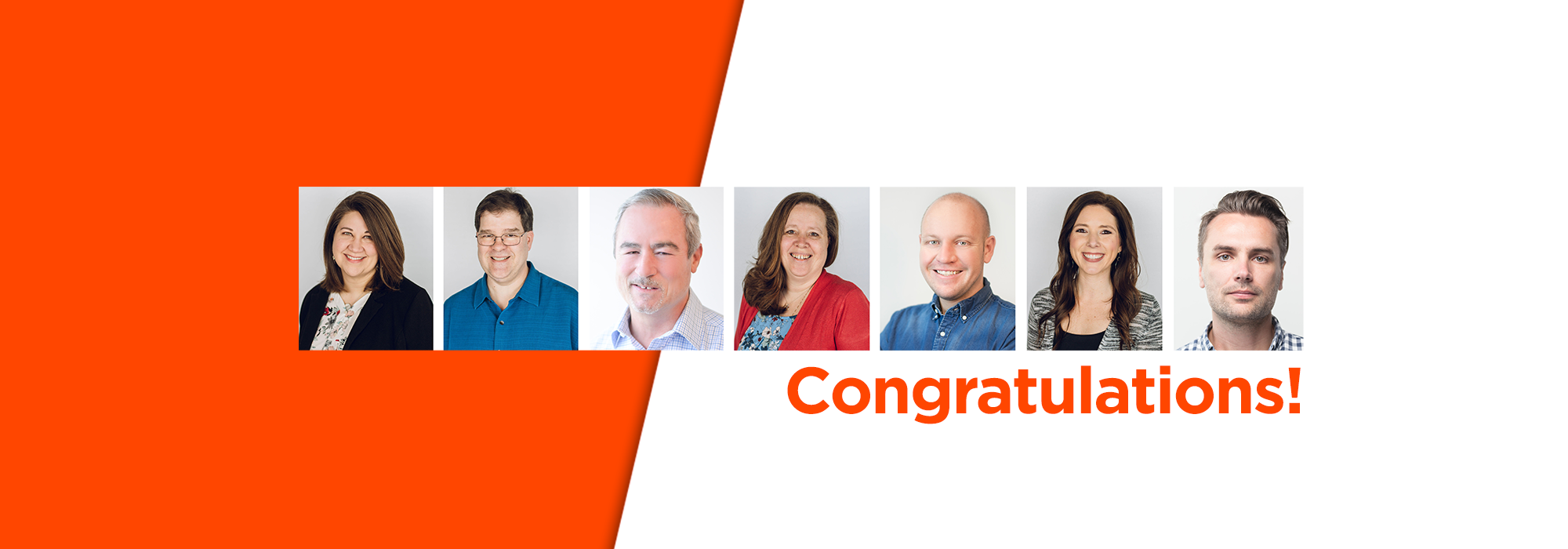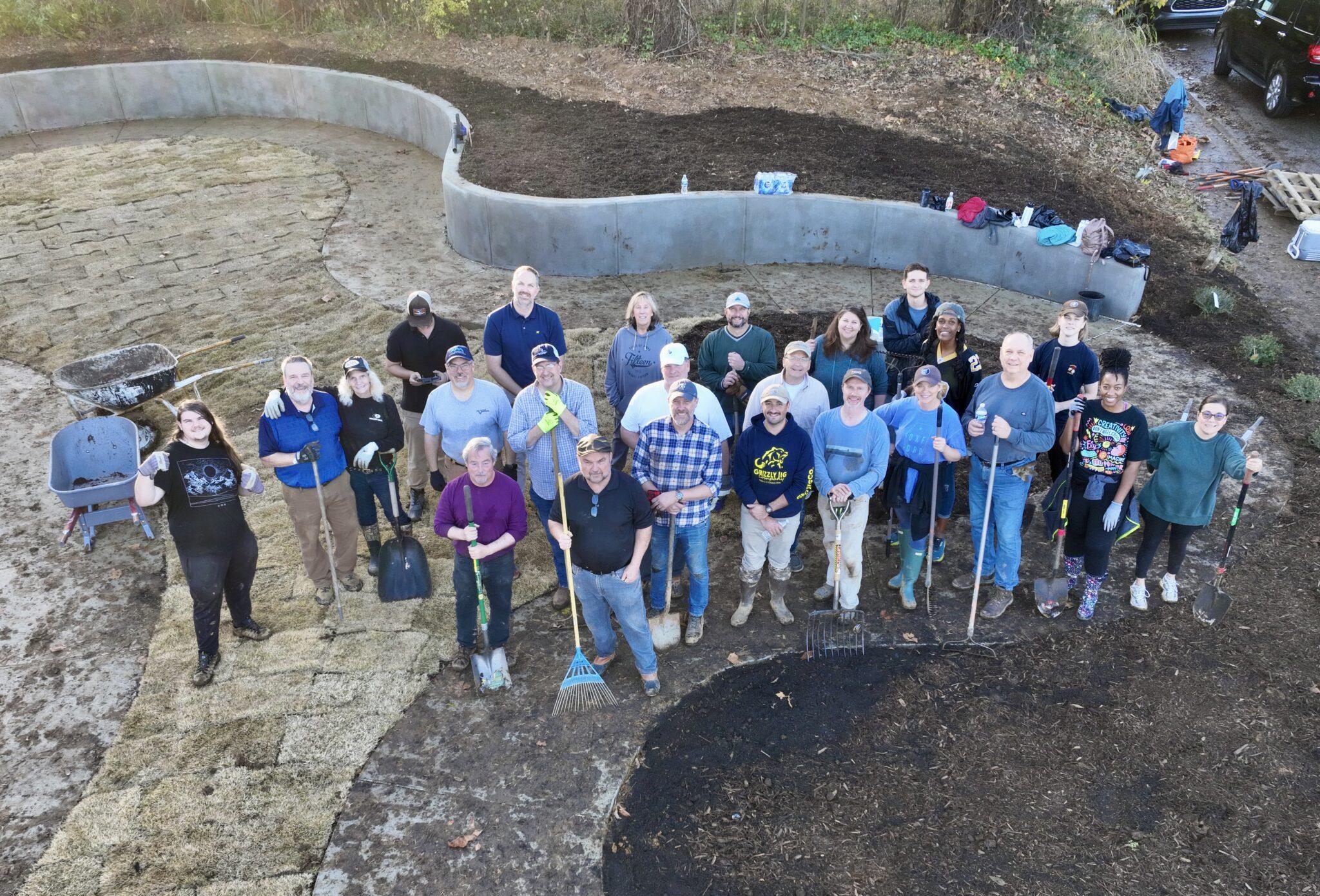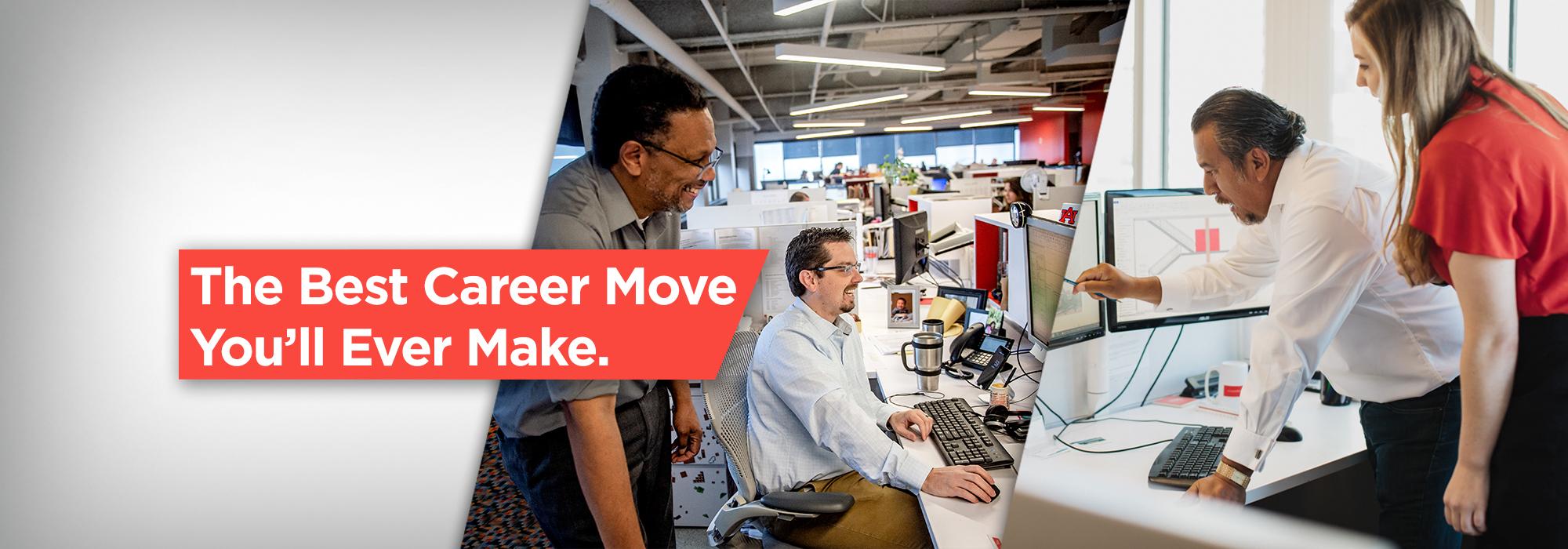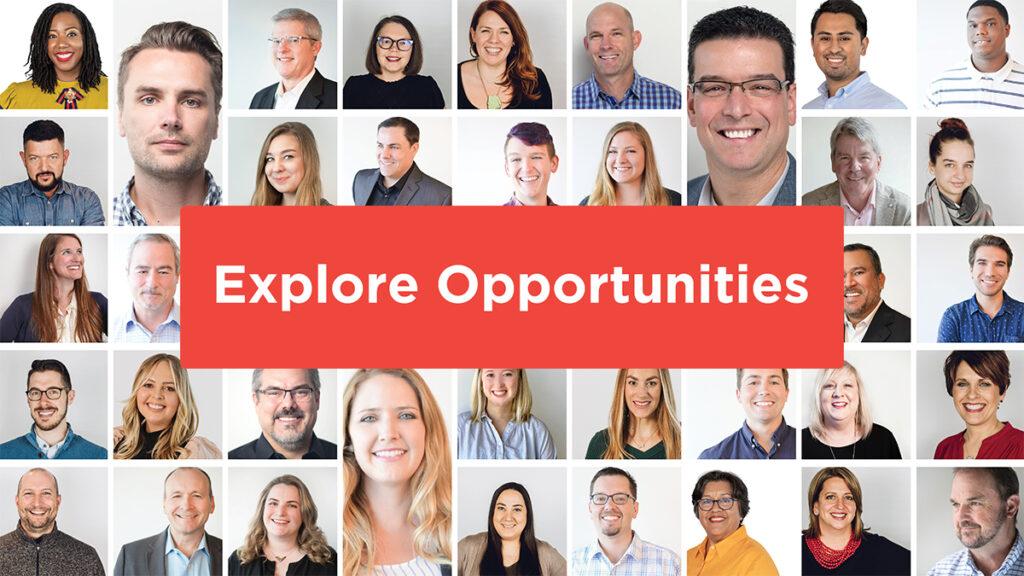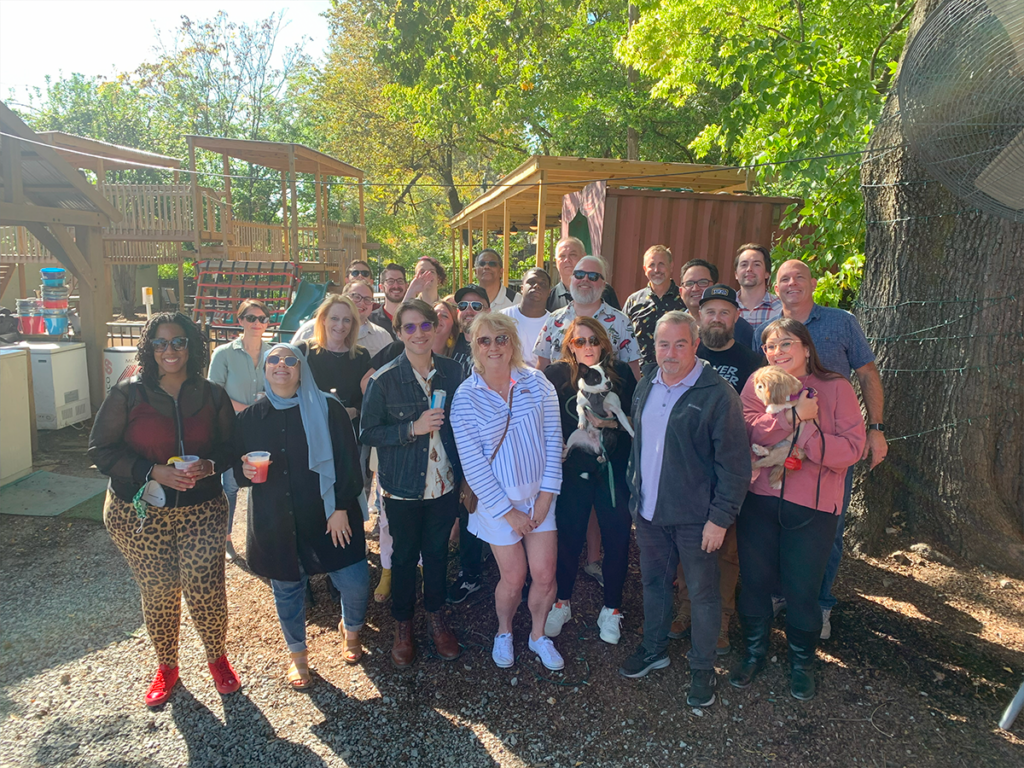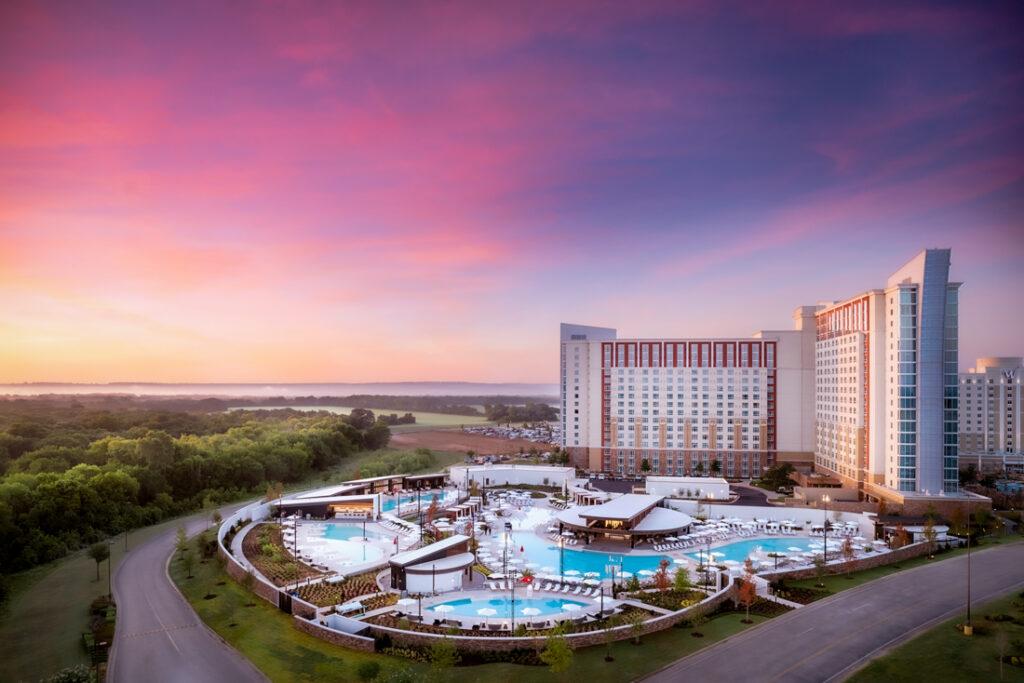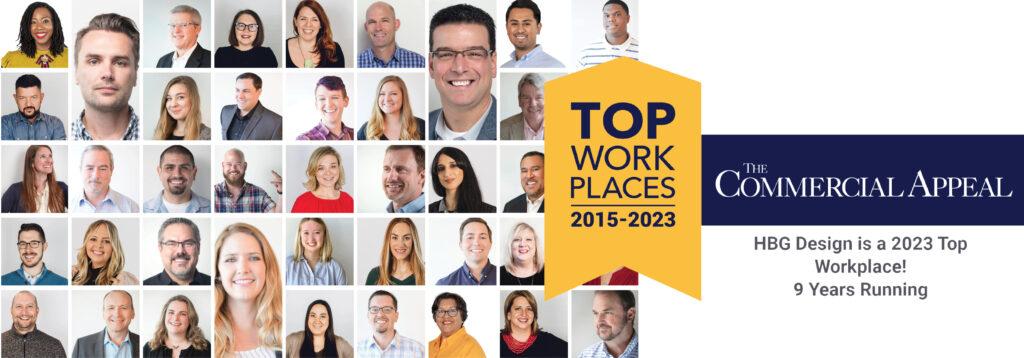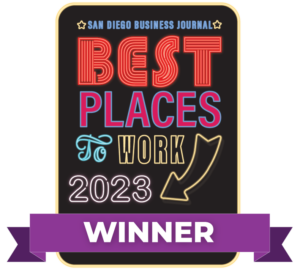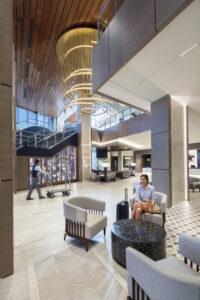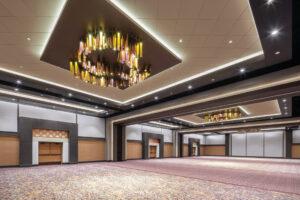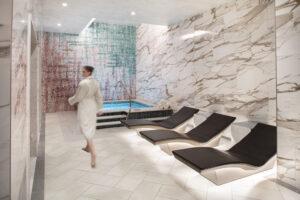Work, Play, and Panoramic Views: HBG Design's New Downtown San Diego Office
With great anticipation and enthusiasm, HBG Design announces that our San Diego team has officially relocated to new office space within the vibrant downtown cityscape, effective March 1, 2024.
“Downtown San Diego has proven to be the perfect location for our team’s growth,” says Joe Baruffaldi, HBG’s San Diego Office Leader. “This new larger downtown office space will allow us to creatively thrive as we continue to innovate the design of unique hospitality, entertainment, and mixed-use experiences, in San Diego, along the West Coast, and nationally.”
HBG Design San Diego’s new office address is:
1 Columbia Place
401 West A Street
Suite 700
San Diego, CA 92101
Phone: 619-858-7888
That View Though!
Perched on the 7th floor, our new downtown office offers panoramic vistas of the stunning San Diego Bay, the bustling San Diego International Airport, and the lush expanse of Balboa Park. Designed with collaboration in mind, our open office environment fosters seamless idea-sharing and teamwork among coworkers. Featuring expansive workspaces, high ceilings, and an open floor plan, HBG Design's San Diego office is a testament to our commitment to connectivity and creativity. Embracing our brand aesthetic, the office design seamlessly integrates features and zones that visually and physically unite employees, embodying our design-driven culture and fostering a vibrant atmosphere of innovation.
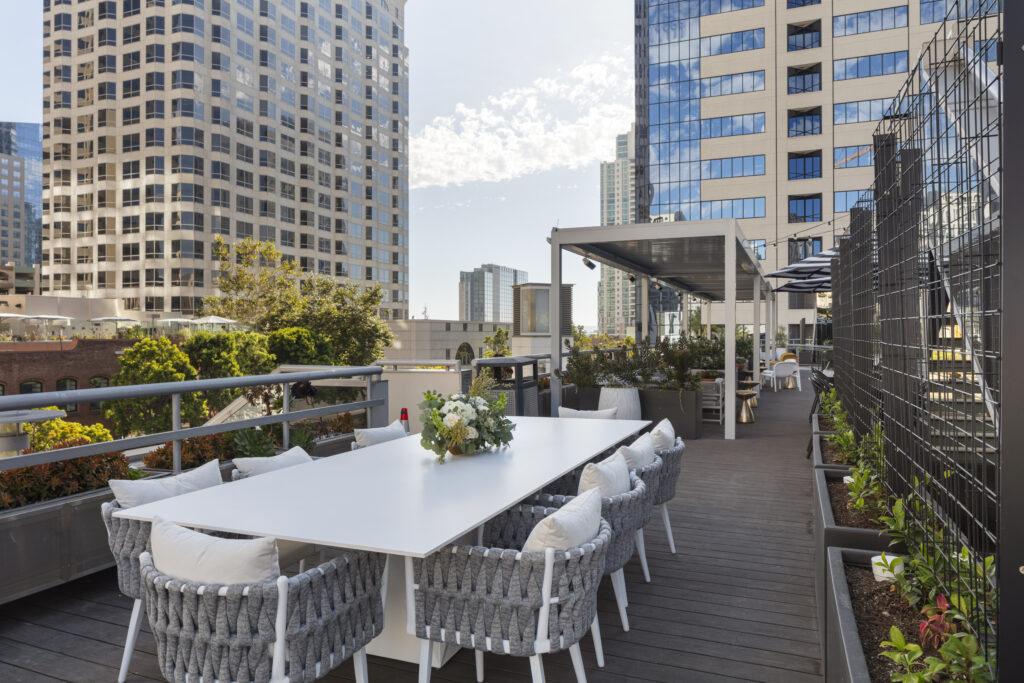
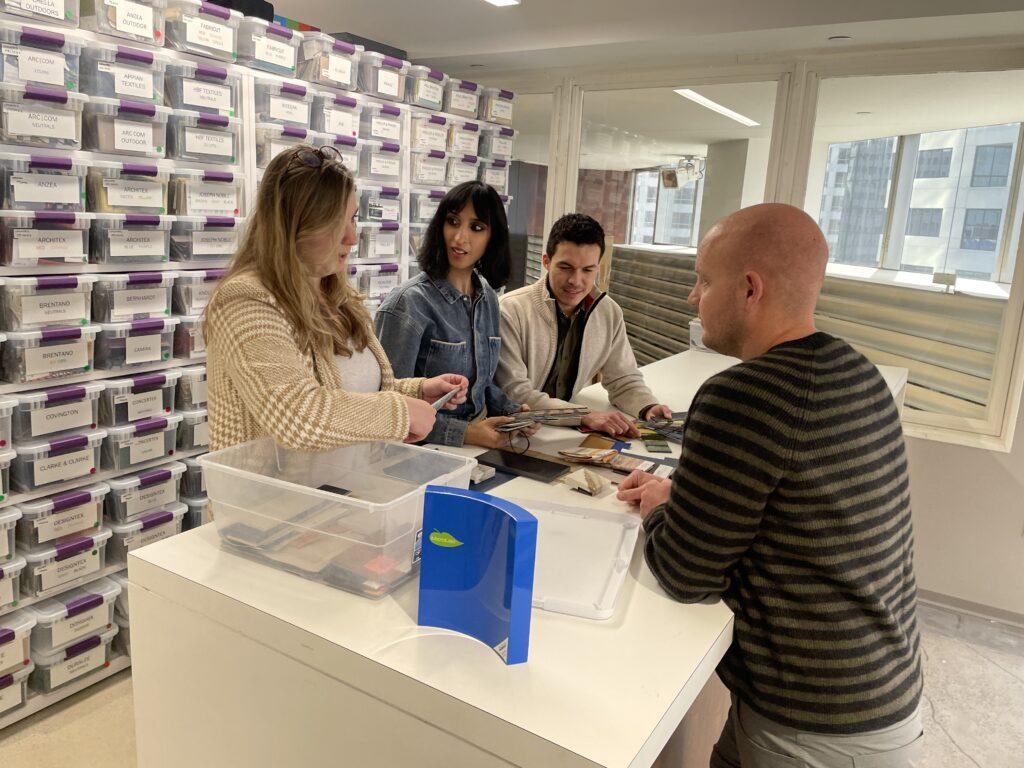
Inspired in Little Italy
1 Columbia Place is nestled in the heart of San Diego’s Little Italy, a vibrant and bustling community brimming with charm, culture, and delectable culinary delights. For a midday escape or a post-work retreat, Little Italy offers the perfect respite for HBG staff. Whether it's a leisurely lunch break at a charming sidewalk café, unwinding after a long day at the office with a stroll along the picturesque waterfront, or a visit to one of the neighborhood's many wine bars or craft breweries – Little Italy has it all!
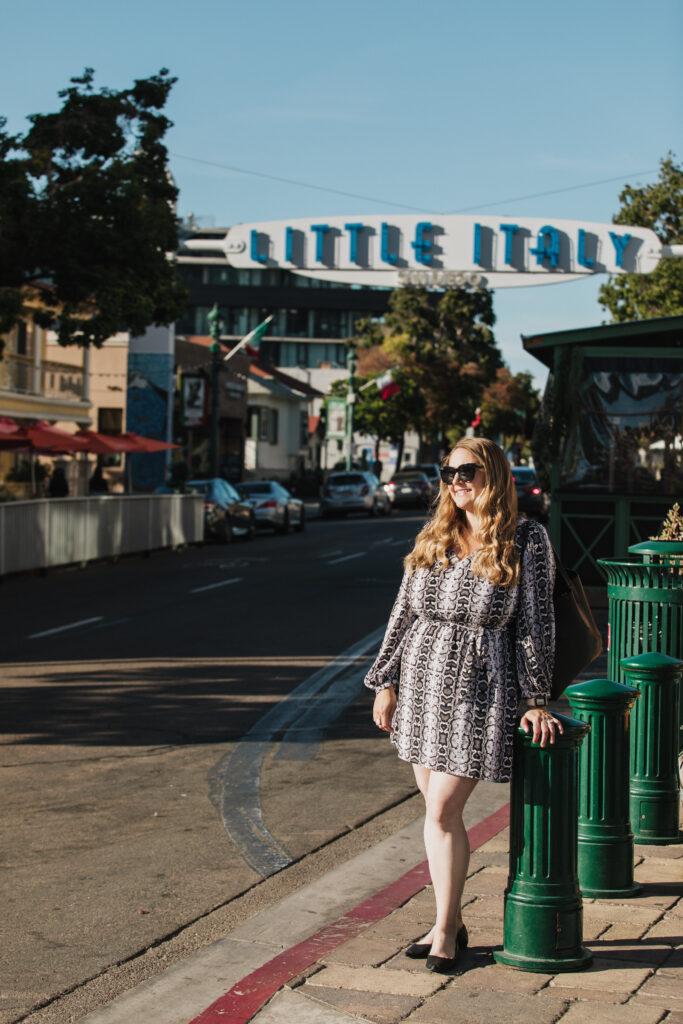
Elevating the Workplace Experience
1 Columbia Place also boasts a host of amenities designed to enhance the professional and personal lives of our team members. From a bustling café to a serene rooftop terrace, these communal public spaces offer the perfect blend of productivity and relaxation. Our San Diego team will be able to stay active in the state-of-the-art fitness center and find moments of respite in the private outdoor spaces.

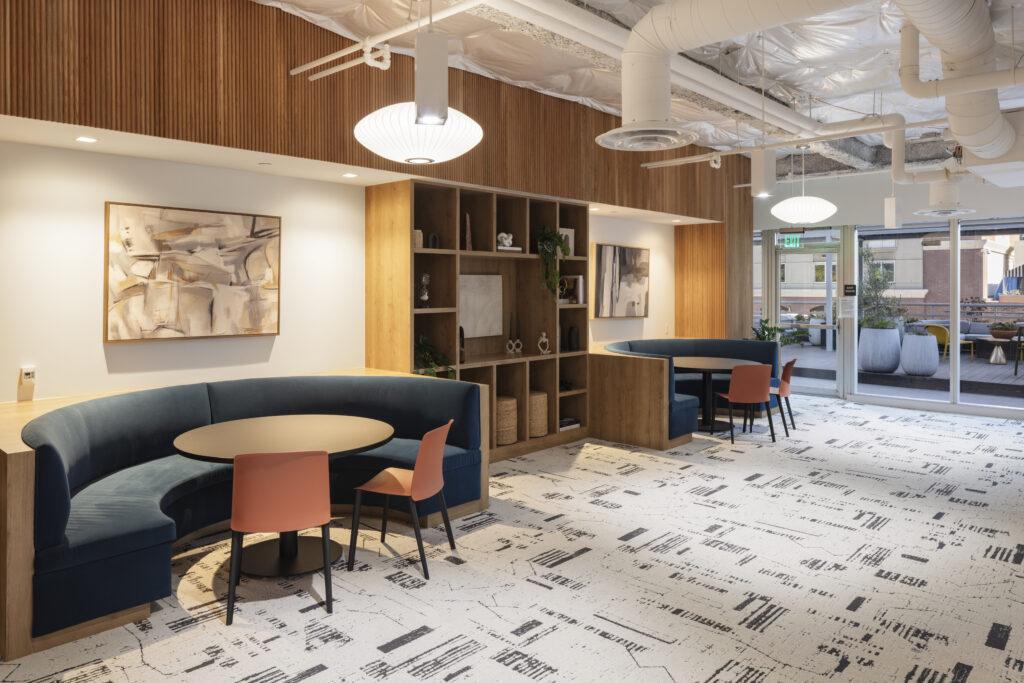
We’ve Come a Long Way in San Diego!
HBG’s San Diego office opened in 2016 on the heels of winning the commission for a multi-million-dollar resort expansion at Sycuan Casino Resort in East San Diego County. That win launched the firm’s ability to make the California dream a reality. Our core San Diego architecture and interior design leadership (the OG’s as we call them) have built HBG’s formidable presence on the West Coast. The San Diego office tripled in size during its first year of operation and has been growing ever since. This move to One Columbia Place allows us to keep up with that pace of growth.
We’re a recognized San Diego Business Journal ‘Best Place to Work’ and three of our ‘OGs’ were recently touted as San Diego ‘Leaders of Influence in Architecture and Design’. Technology allows HBG’s San Diego, Memphis, and Dallas offices to work interconnectedly to deliver project designs over the miles, and regular gatherings, community volunteering, and professional education events bring us together through camaraderie and continuous learning!
Lucas Oil Live: Excellence in Event Venue Design
Introducing Lucas Oil Live at Winstar World Casino & Resort, a world-class entertainment event venue designed by HBG Design.
Within the Dallas/North Texas resort market, this groundbreaking venue sets a new standard for live performances, blending cutting-edge design with operational efficiency to create a symphony of entertainment.
Guests step into the realm of Lucas Oil Live, where every element is meticulously crafted to amplify the energy pulsating from within. From the moment patrons set foot in the 6,500-seat amphitheater-style arena, they are enveloped in an immersive journey unlike any other. The design narrative unfolds with dynamic LED-lit concourses, guiding patrons towards the heart of the action while mirroring the rhythmic flow of music that awaits them.
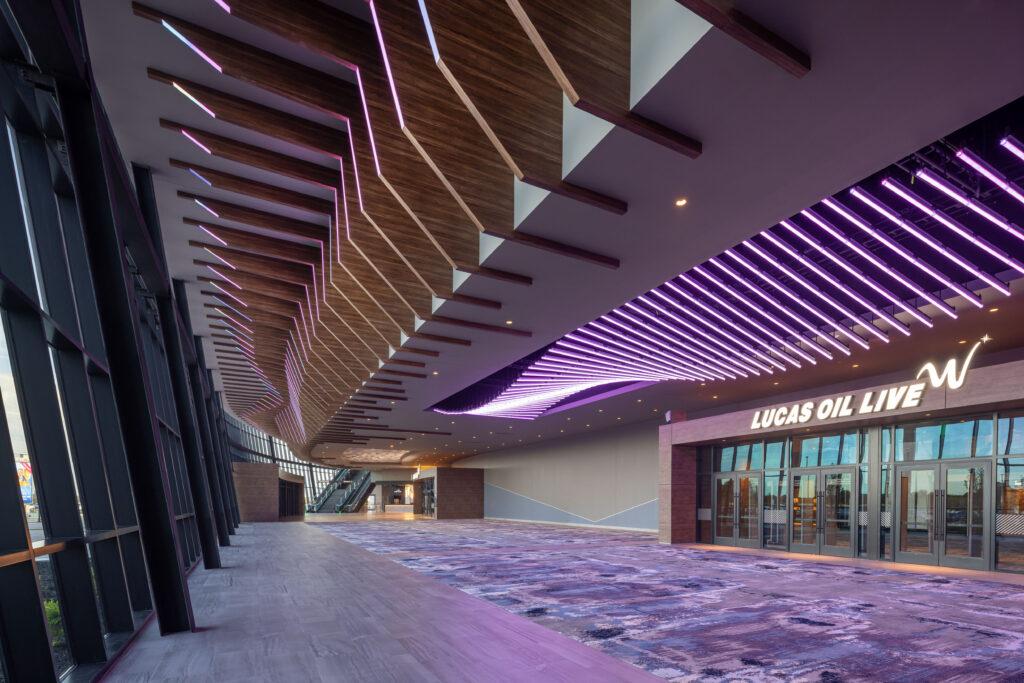
Drawing inspiration from the rebellious spirit of rock and roll, Lucas Oil Live exudes a vibrant aesthetic that resonates with the soul of amplified music. Bold angles, colored lights, and distinctive glass elements converge to create a beacon of rock and roll rebellion, distinguishing this venue as a destination experience within the Winstar Campus.
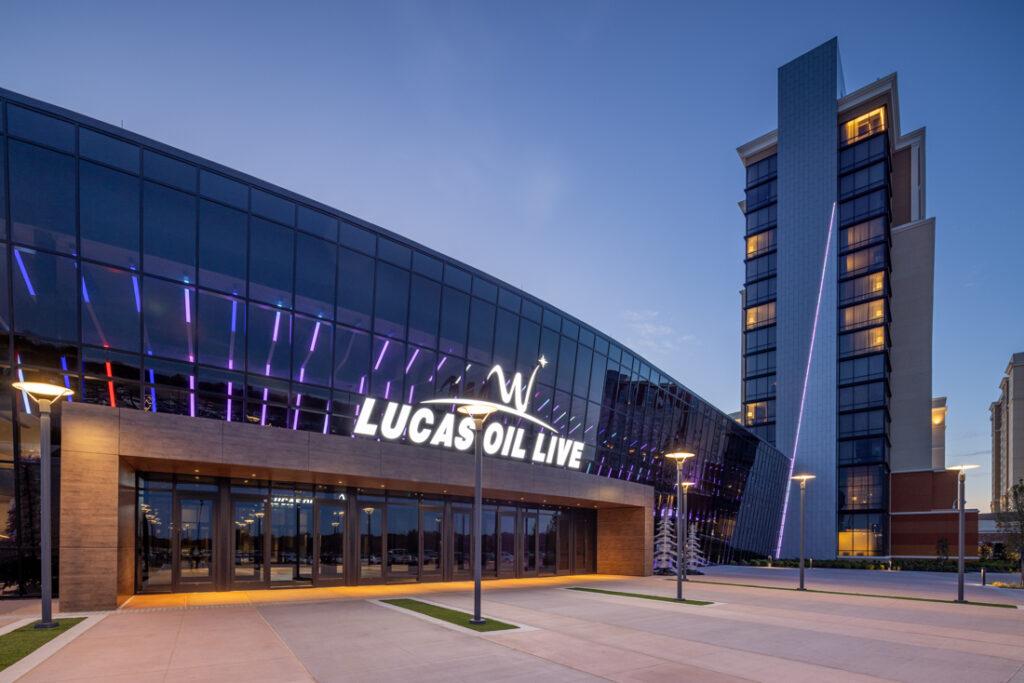
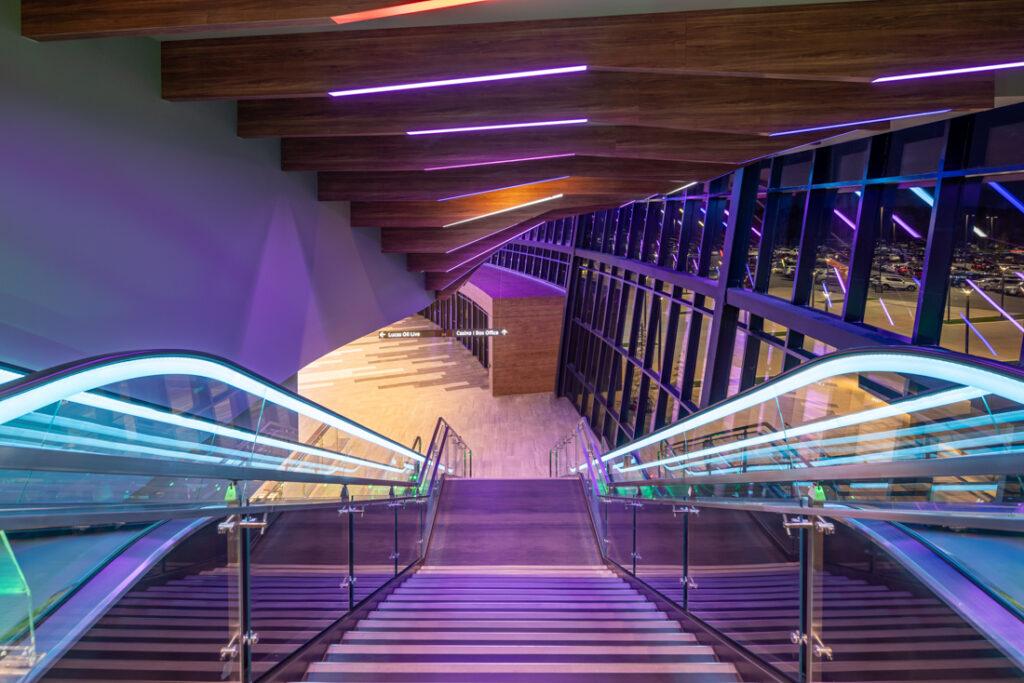
At the core of HBG Design's design philosophy lies a unwavering attention to detail, evident in every aspect of Lucas Oil Live. From the rebellious angles of the architecture to the streamlined customer experience at concessions, every element is carefully curated to ensure that guests can fully immerse themselves in the magic of live entertainment.
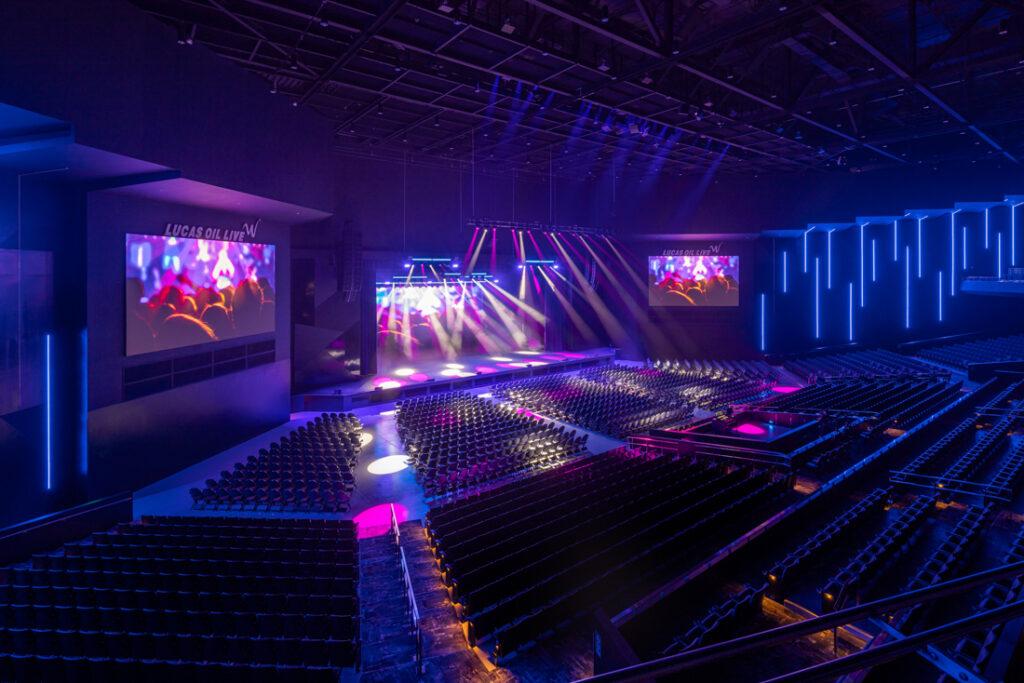
The design team's commitment to operational excellence extends beyond the stage, with innovative solutions designed to accommodate a diverse range of events. Whether patrons are enjoying a concert, MMA boxing match, or banquet seating, the venue seamlessly adapts to meet the dynamic demands of any occasion.
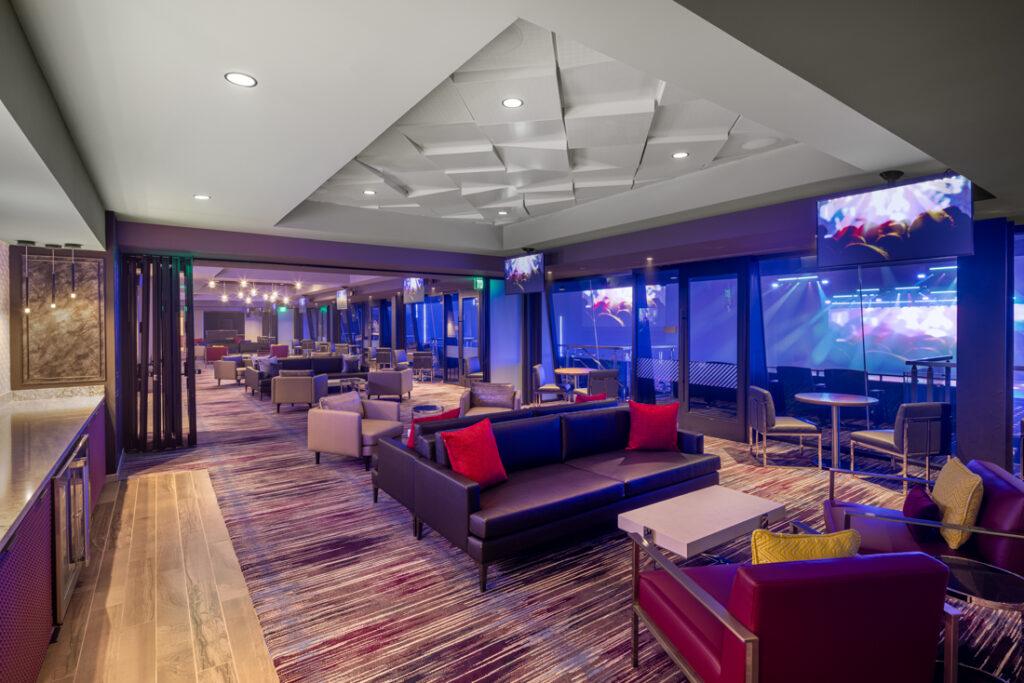
And for those seeking the ultimate VIP experience, the Club Level and VIP area offer unrivaled views and luxurious amenities, ensuring that every aspect of the entertainment experience is indulgent and unforgettable.
HBG Design Welcomes Ray Mabry, AIA, as Dallas Office Leader
HBG Design Welcomes Ray Mabry, AIA, Industry Veteran as Dallas Office Leader and Principal for its National Hospitality Practice
HBG Design is pleased to announce that Ray Mabry, AIA, LEED AP BD+C, has joined the firm’s national hospitality practice as HBG’s new Dallas Office Leader and Principal. Ray originally hails from Abilene, Texas, and is a long time Dallas resident. His 24-year career in architecture has taken him across the country and around the world as a design leader, working for the last twenty years with HKS Architects in Dallas. Ray will serve HBG Design clients as Principal-in-Charge and Project Manager.
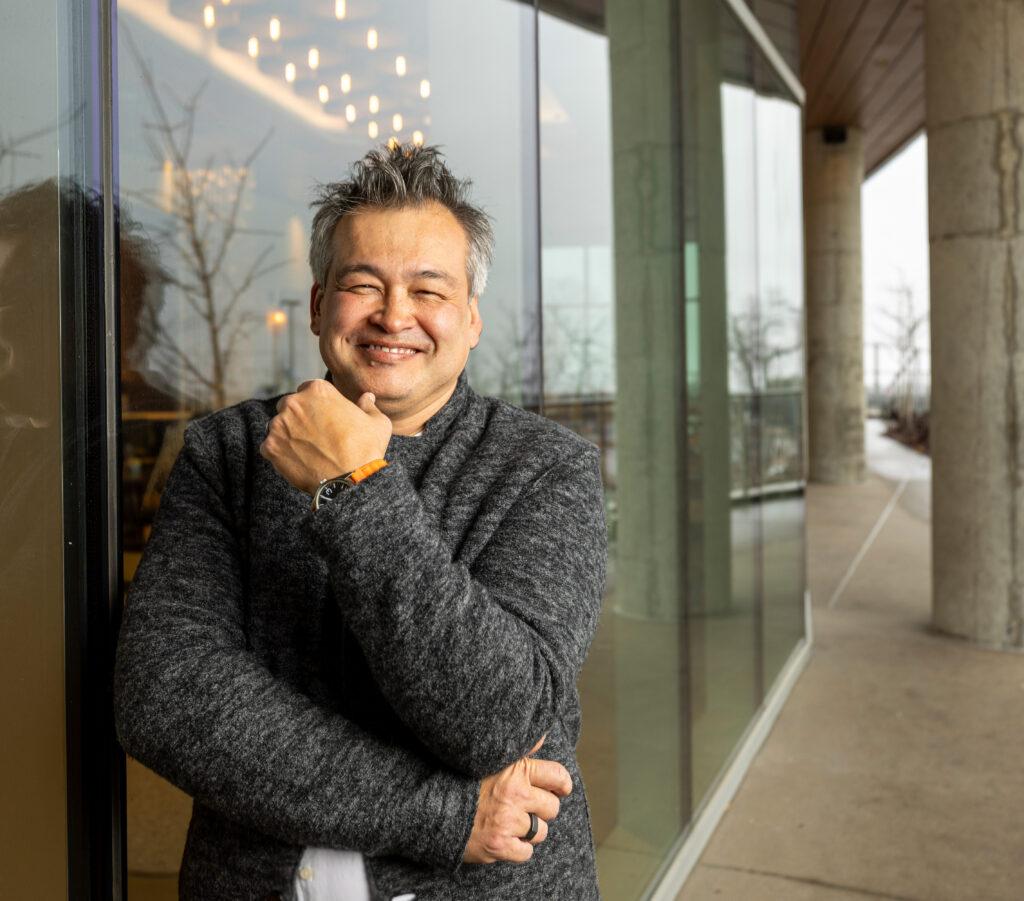
“Ray is a veteran of leading complex projects in the hospitality and entertainment market sector, making him a perfect fit to lead HBG’s projects in the space,” says Nathan Peak, AIA, LEED GA, Practice Leader at HBG Design. “He is committed to leading HBG’s Dallas Office with great passion and enthusiasm as he forges new frontiers in the national hospitality and entertainment industry and helps HBG cement our footprint in the Dallas metro area professional community.”
Ray brings a wealth of design leadership and project management experience in the commercial hospitality industry for clients under most major brand flags in both urban and resort locations. His experience in the gaming sector also includes commercial gaming projects mainly in Las Vegas and Asia for various operators, and most recently MGM National Harbor. Ray has a project portfolio that spans across Europe, Asia, South America, the Middle East, and the Caribbean and has been instrumental in delivering brand hospitality designs that include the Hotel Drover in the historic Fort Worth Stockyards and both The W Hotel and Omni Hotel in Nashville, Tennessee.
As Dallas Office Leader, Ray will deepen his specialized focus on premium and luxury brand hospitality, gaming/entertainment, and conference/event venue design.
“I share HBG Design's philosophy of crafting memorable experiences”, says Ray. “I take great joy in designing places where guests can unwind and escape from their daily lives, while providing the best possible experiences to my clients and their guests."
Hadsten Solvang: Hotel Transformation in the Heart of Wine Country
The Hadsten Solvang, Tapestry Collection by Hilton, is a charming 69-guestroom, 5-suite, two-story boutique hotel property located in the heart of Solvang, California, a Danish-inspired village in the Santa Ynez Valley just north of Santa Barbara. The area is known for its wine country tourism and delicious food and beverage offerings. Read more below about the HBG's Hadsten Solvang Hotel Transformation.
Previously known as Hadsten House, this 1970’s era motel-style property underwent a thoughtful renovation and a rebranding under the ownership of the Santa Ynez Band of Chumash Indians, in collaboration with Direct Investment Capital Enterprise.
HBG Design led architecture, interior design/FF&E design, and construction administration for the extensive 33,413 square-foot transformation of the property to achieve a unique hotel concept geared towards group lifestyle travelers.
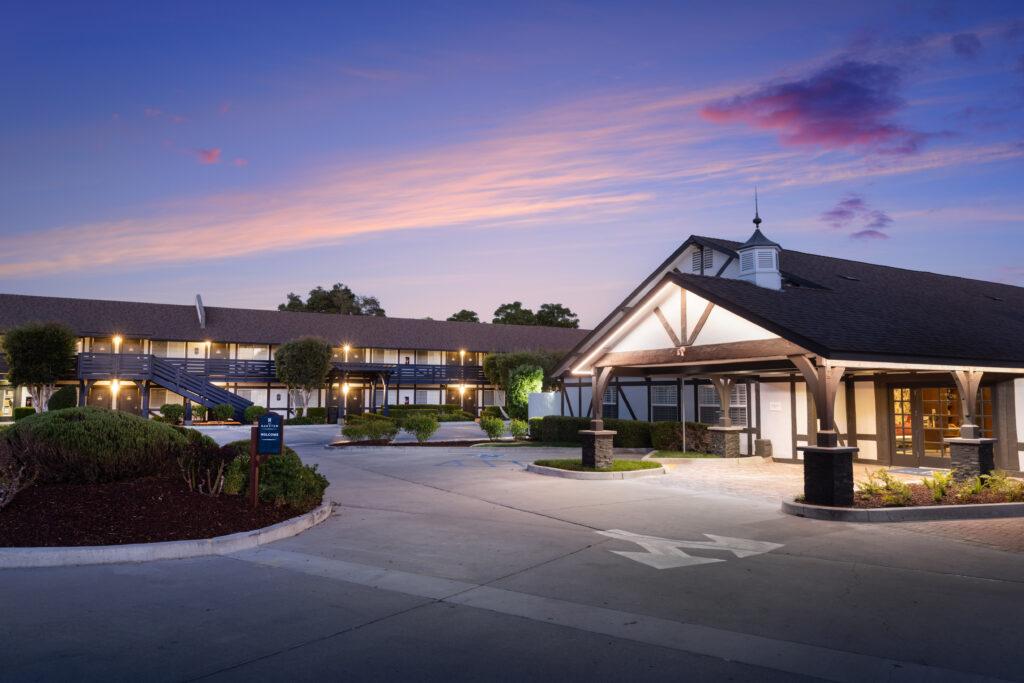
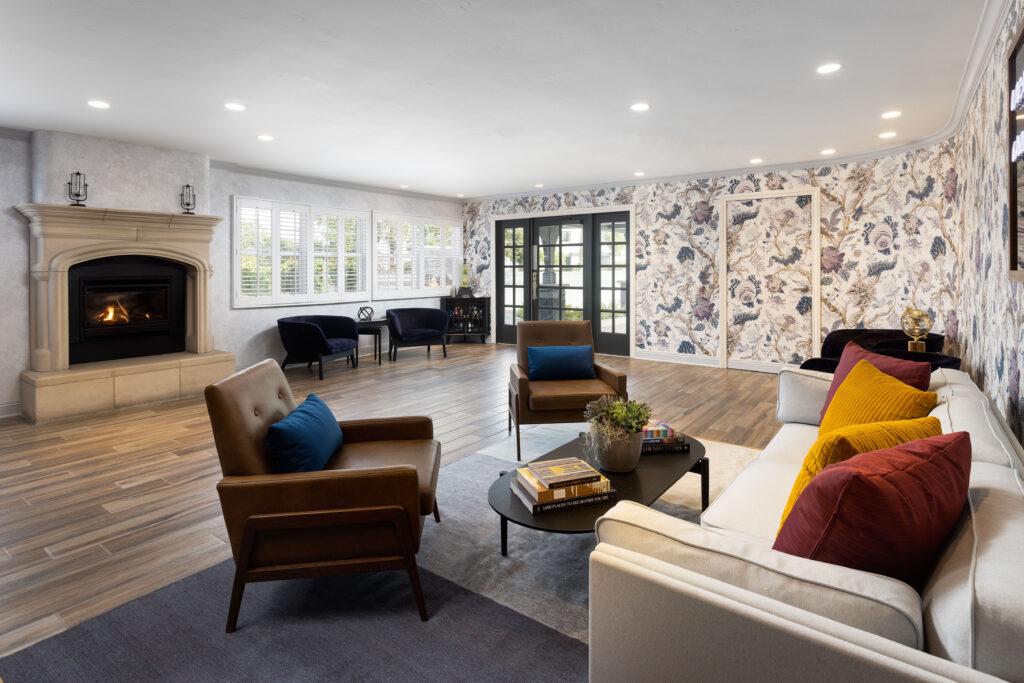
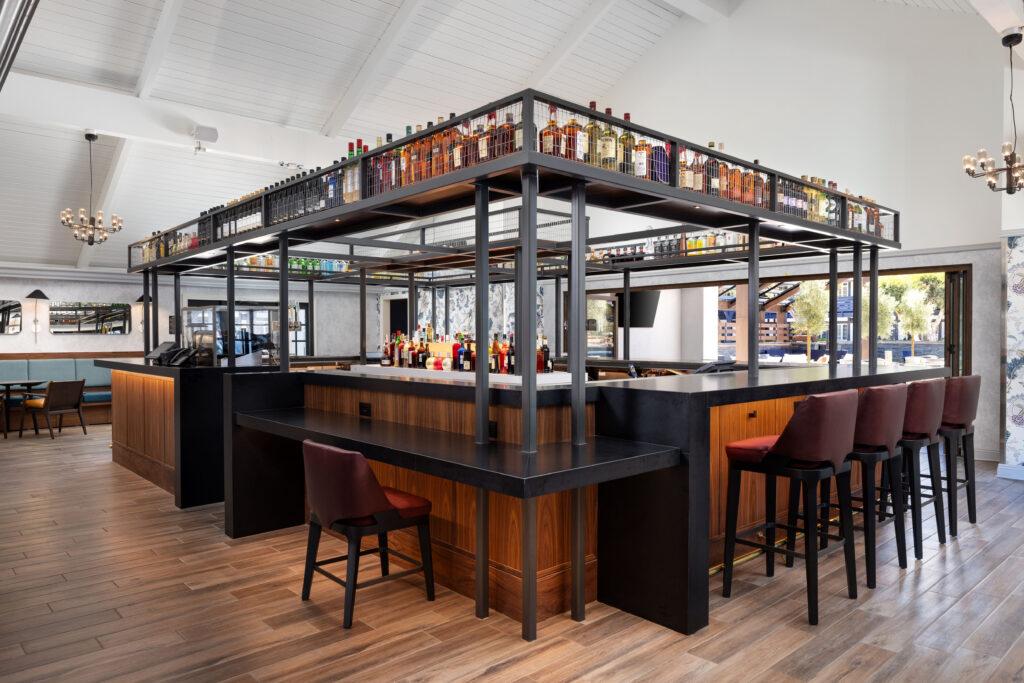
The Hadsten Solvang project is a transformation of a 1970’s Old Danish style hotel in wine country into a ‘Danish Modern’ boutique hospitality experience, featuring new indoor-outdoor bar and lounge amenities.
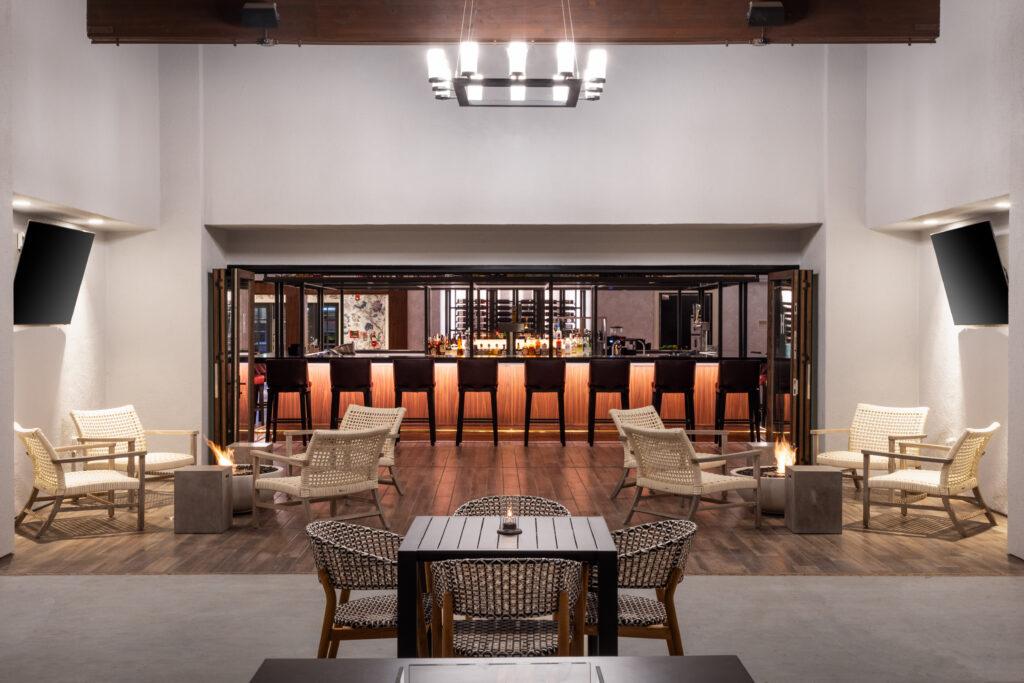

Tapestry Collection by Hilton represents an upscale portfolio of hotels that offer guests unique style and vibrant personality. Each handpicked property encourages guests to explore their local area, seek their adventurous side and create an authentic connection with the destination. The Hadsten Solvang, Tapestry Collection by Hilton brings a cool vibe to its authentic ambiance enabling guests to create their own travel story by immersing themselves in the hotel’s on-property food and beverage, fitness, and leisure offerings, or travel off the beaten path to explore the local wineries, vineyards, and tasting rooms.
Read about another HBG-designed Hilton property: the Canopy by Hilton Downtown Memphis Hotel.
Design Thinking: Resort Experiences for the Getaway Guest
Crafting Unforgettable Getaway Experiences: HBG Design's Expertise in Casino Resort Design
Welcome to HBG Design's exclusive Guest Journeys series, where we unravel the art of designing unforgettable experiences for casino resort guests. We are shining a spotlight on the getaway guest, exploring the key elements they seek when choosing their ideal weekend escape. As experts in hospitality and entertainment projects, HBG Design brings you four key elements we consider when designing for the getaway guest.
https://youtu.be/pXOo-XgNTtk
-
Elevated Gaming Experience:

Eagle Mountain Casino, Porterville, California For guests seeking a gaming-centric resort, HBG Design emphasizes creating a vibrant, immersive casino atmosphere. From arrival to departure, our goal is to elevate excitement, energy, and imagination, leaving guests eagerly anticipating their return.
-
Escapism in Amenities:
 We understand that guests in search of a getaway crave enticing amenities. Our resorts feature immersive pool experiences, on-site concert venues, and world-class spas. In-house concert venues inject an exciting energy, providing a dynamic live entertainment component that enhances the overall resort experience.
We understand that guests in search of a getaway crave enticing amenities. Our resorts feature immersive pool experiences, on-site concert venues, and world-class spas. In-house concert venues inject an exciting energy, providing a dynamic live entertainment component that enhances the overall resort experience. -
Strategic Amenity Adjacencies:

Oaklawn Racing Casino Resort, Hot Springs, AR HBG Design ensures that resort layouts are intuitive, facilitating easy navigation between gaming areas, accommodations, and entertainment venues. Clear wayfinding signage and well-planned amenity adjacencies ensure seamless access for all guests. We consider the flow of energy within the casino, creating distinct zones with varying atmospheres to cater to different preferences.
-
Luxurious Accommodations:

Four Winds South Bend Casino, Hotel and Spa - VIP Suite Our commitment to excellence extends to opulent and comfortable accommodations that exude luxury while providing the comforts of home. From suite-style rooms to high-end furnishings and modern amenities, we design premium experiences that resonate with our guests.
Join us in this exciting journey of creating unparalleled getaway experiences. At HBG Design, we continue to set the standard for excellence in casino resort design, ensuring each guest's escape is nothing short of extraordinary. Stay tuned for more insights and innovations as we redefine the art of hospitality and entertainment design.
Announcing Our New Senior Associates and Associates!
Announcing our new 2023 staff promotions! HBG Design is proud to announce that seven established HBG employees have been elevated to the positions of Associate and Senior Associate at the firm. This announcement marks another step forward in HBG Design’s strategic plan to grow its next generation of leaders, ensuring our practice's longevity far into the future.
These seven individuals have each demonstrated leadership, not only in their role but, perhaps most importantly --- in the way they create an environment where others in the firm can learn, grow, and contribute great things.
These newly elevated employees foster ingenuity; they listen, teach, and invest in themselves to grow and develop those who work with them. That is the truest mark of a leader – to heed the calling not only to reach for excellence on your own but to have the desire and ability to create opportunities for others to thrive.
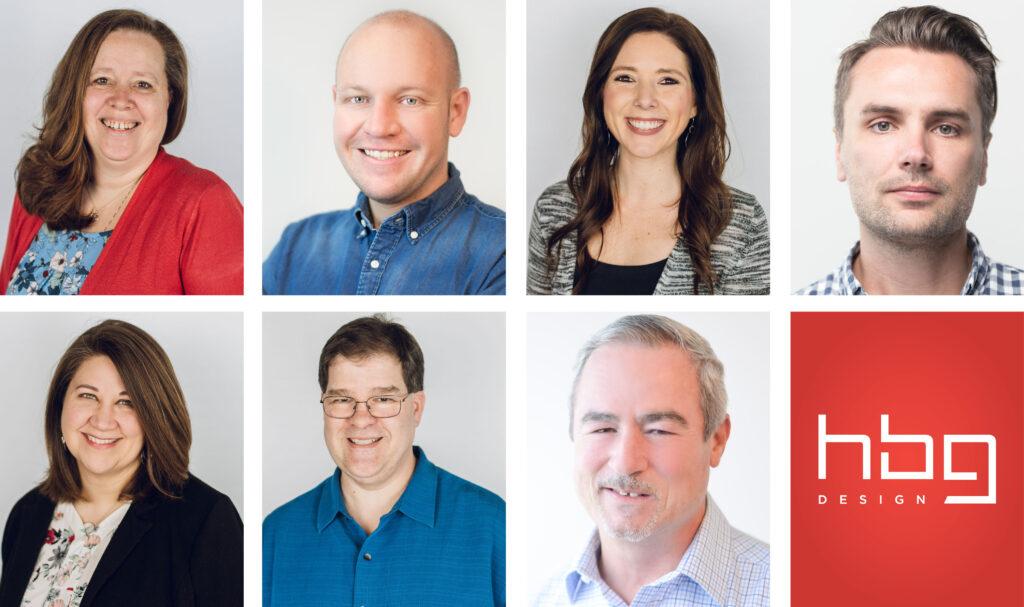
Announcing our new Associates:
 Thor Harland, AIA, Associate / Lead Architectural Designer
Thor Harland, AIA, Associate / Lead Architectural Designer
Thor has created a significant impact on the design narrative at HBG Design. Inspired design is at the heart of our purpose; Thor embodies this ethos with a depth that resonates. Thor's distinctive, lyrical approach to design serves as a pivotal force. His work embodies elegance and simplicity; it is fluid and graceful, rich in concept, and steeped in contextual relationships that evoke a sense of place. Thor communicates design by telling visual stories, helping clients embrace the vision behind the design through artfully nuanced drawings and conceptual diagrams. He doesn't merely present design, he encapsulates a thoughtful dialogue that resonates with both architects and clients alike.
Wielding vision, innovation, and a steadfast commitment to advancing HBG’s position as an industry leader, Thor’s passion for design, spanning architecture to interiors, injects a holistic perspective into every project. What distinguishes him most is his ability to navigate beyond design constraints, composing solutions that are not only cost-effective but remain true to the overarching vision. Thor has been promoted to Associate at HBG Design. Congratulations, Thor!
 Nathan Blair, AIA, Associate / Lead Architectural Designer
Nathan Blair, AIA, Associate / Lead Architectural Designer
An integral part of our success, Nathan is expanding horizons in our San Diego office. Bringing people together while demonstrating an unwavering passion for design execution are Nathan’s superpowers. He’s helped transcend the miles between teams in different office locations by aligning everyone together and uniting our project teams across the continent.
Under pressure, he's the embodiment of professionalism and leads teams with contagious positivity. His influence doesn't stop at the end of the workday; Nathan represents HBG at local business and design community events participating in after-hours gatherings supporting The Downtown San Diego Partnership and Friends of San Diego Architecture. Nathan has been promoted to Associate at HBG Design. Cheers to Nathan's Achievements!
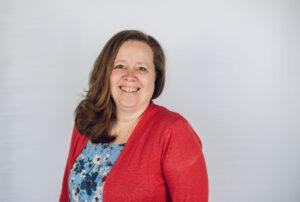 Tava Frazier, IIDA, NCIDQ, LEED AP, Associate / Interior Designer
Tava Frazier, IIDA, NCIDQ, LEED AP, Associate / Interior Designer
Tava Frazier has been promoted to Associate at HBG Design. She’s not only a highly skilled leader, but she has an extraordinary ability to adapt to a variety of project roles and responsibilities quickly. She has a gift to see beyond the strict definition of a project role, and adjust her focus on what the project needs to be successful. One moment, Tava may be an Interior Design Project Architect, who takes the reins and leads as the project manager. Or, her role might be Interior Design Project Manager, who also juggles the responsibilities of a project architect.
Without exception, Tava always brings exceptional efficiency and commitment to her projects. A dedicated mentor, Tava advocates for those she sponsors, seeking out opportunities for junior staff to learn new skills, build deep industry knowledge, and shape an immersive career experience at HBG. Congratulations, Tava!
 Morgan Streitmatter, Associate / Human Resources Manager and Memphis Office Manager
Morgan Streitmatter, Associate / Human Resources Manager and Memphis Office Manager
Morgan is the epitome of designing a career experience, showcasing versatility and excellence in diverse facets of operations, office management, and communications. Morgan's career journey has touched various aspects of our operations, and her impact has been transformative. As the senior member of our Office Management team, Morgan played a pivotal role in creating a unified "One HBG" office structure. Her dedication led to the implementation of consistent operating procedures and standards across all three nationwide HBG locations.
Morgan's shining moments come to life in her role as Human Resources Manager. Her business acumen and steadfast work ethic have not only helped foster a more positive work environment, but her empathetic leadership has also elevated each employee’s experience with Human Resources. Morgan's journey from being a part of the team to leading it is nothing short of inspiring. Her dedication, strategic vision, and commitment to excellence have propelled her into a leadership role where she continues to make a profound impact on our organization. Congratulations, Morgan!
Announcing our new Senior Associates:
 Ferran Espin, AIA, NCARB, Senior Associate / Project Architect
Ferran Espin, AIA, NCARB, Senior Associate / Project Architect
As a Project Architect at HBG Design, Ferran leads many of the firm’s largest and most complex entertainment and hospitality projects. He conveys intricate concepts straightforwardly, instantly instilling confidence among his peers, clients, and consultant/contractor teams. Ferran has exceptional character and has earned the trust and attention of HBG clients due to his direct, composed communication and his prolific technical acumen. He is a driving force behind the delivery of recent large-scale HBG projects.
Ferran exemplifies project and people leadership at HBG. He has a flair for making personal connections and is a passionate, committed advocate for the growth of his team members. As a trusted mentor, Ferran is always seeking to educate and inspire others with wisdom imparted in a direct and soothing communication style. Congratulations, Ferran!
 Dana Ramsey, CPSM, Senior Associate / Director of Marketing
Dana Ramsey, CPSM, Senior Associate / Director of Marketing
With 10 national SMPS Marketing Communication Awards and 2 regional ADDY Awards under her belt, Dana contributes her 25 years of marketing and communication experience, insight, and creativity to HBG. Her strategic thinking and talent for creating compelling content and messaging have made a lasting impact on the firm.
Dana is infinitely curious and instigates meaningful change, perpetually seeking ways that add value to HBG’s processes. An intuitive, empathetic listener, her 18-year journey at HBG has been marked by an intense spirit of teamwork and collaboration as she guides the marketing team in the creation of high-impact promotional campaigns and effective project pursuit messaging. Congratulations, Dana!
 Jeff Phipps, Senior Associate / IT Director
Jeff Phipps, Senior Associate / IT Director
Jeff Phipps began his journey at HBG supporting a single office. Today, he's the backbone of three thriving offices nationwide, supporting over 100 team members. His leadership across all aspects of IT influences everyone and everything at HBG - from hardware to software, connectivity to cybersecurity. He's not just a troubleshooter; he's a strategic thinker, meticulously planning budgets, maintaining equipment, and ensuring our technology and infrastructure advance and are seamlessly integrated into our workflow.
Sometimes IT can seem like a never-ending rollercoaster, but Jeff maintains his signature calm, positive and helpful attitude every day. He’s our IT symphony leader, ensuring every HBG employee has the tools they need to excel in their own role. Perhaps the most remarkable thing about Jeff is how he leads through service and support. He embodies the spirit of HBG – thriving on collaboration, innovation, and unwavering support for the collective HBG team.
We are so proud of this group and the entire team of HBG next-generation leaders who continue to raise the bar and move the firm to new heights.
Nathan Peak, AIA, LEED GA
Practice Leader
HBG Design
Carpenter Art Garden, HBG, Collaborators Create Neighborhood Impact
Carpenter Art Garden and Local Collaborators Transform Binghampton Lot in Memphis into The Tillman Sculpture Park, an Artistic Urban Greenspace
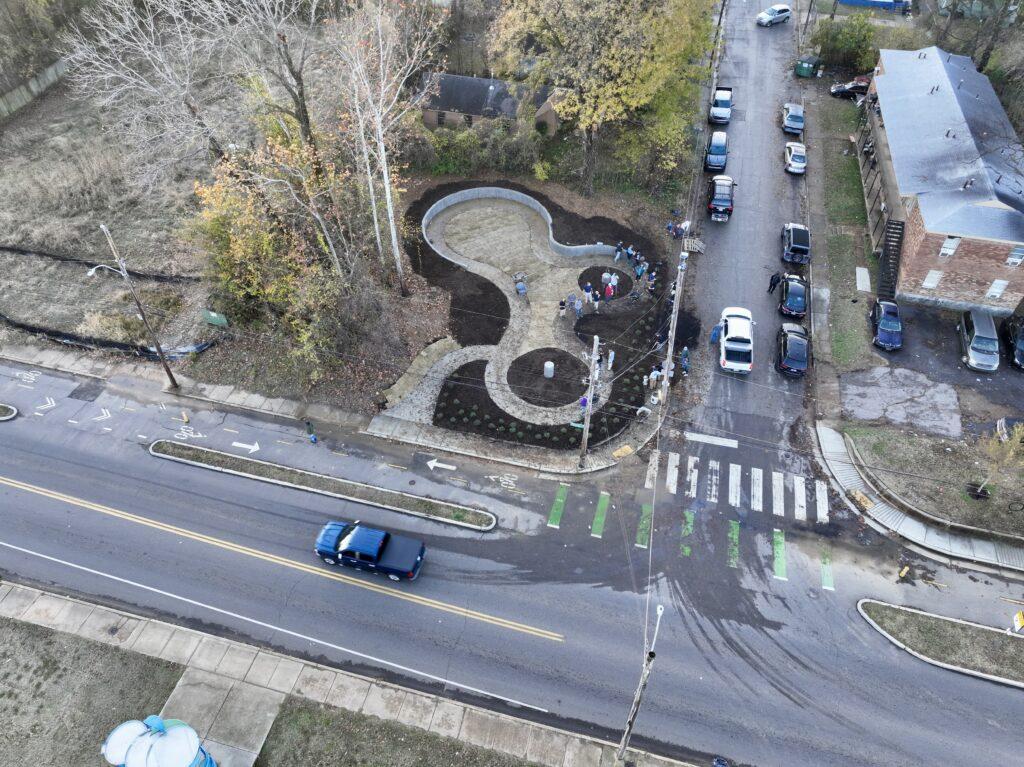
Memphis, TN - Carpenter Art Garden, and a team of local artists and residents, HBG Design architects, landscape designer Greg Touliatos, and Montgomery Martin contractors, are working together to revitalize urban greenspace in Memphis' Binghampton neighborhood as the vibrant, new Tillman Sculpture Park. The greenspace will be located at the corner of Princeton and Tillman. It is just one block away from Sam Cooper Blvd. and next to the Collage Dance Center. The park will transform a neglected lot--previously obtained by Carpenter Art Garden. It will be a creative and family-friendly space to bring a sense of artistic pride to the neighborhood.
“When complete in the spring of 2024, the park will come alive with winding paths, colorful blooms, unique handmade art sculptures, and an intricate mosaic art tile wall,” says Jazmin Miller, Executive Director of the Carpenter Art Garden, “all crafted by a committed volunteer team of local artists, students, designers, contractors, landscaping volunteers, and Binghampton residents.”
About the new Tillman Sculpture Park
The Tillman Sculpture Park is envisioned as a community-driven public art project: a space, a statement, and an environmental symbol of neighborhood growth.
The project directly resonates with the Carpenter Art Garden's mission of growing young creatives through art education, intervention, and therapy programs, while creating an inhabitable space that negates blight, while birthing creativity and culture.
Design and Construction Collaborators
HBG Design architects, Greg Touliatos Landscape Design, and Montgomery Martin Contractors have joined forces to complete the Tillman Sculpture Garden project, providing design and construction services and materials. Montgomery Martin has been integral in several Carpenter Art Garden projects including the Mosaic Park and its ‘Welcome to Binghampton’ sign.
HBG Design Principal Danny Valle, AIA, has played a key role in leading HBG's design and landscaping volunteers for the Tillman park project through the firm's Kirk Bobo Creating Impact Initiative (KBCI). HBG's KBCI program stems from the ongoing philanthropic advocacy of firm co-founder Kirk Bobo, a proponent of channeling HBG’s specialized skills for the betterment of Memphis.
“HBG Design believes in building a better and stronger Memphis by creating uplifting and inspiring places and spaces,” says Valle. “The Tillman Sculpture Garden project is one example of how beautification projects sponsored by our KBCI program can strengthen neighborhoods and create a more vibrant, livable city.”
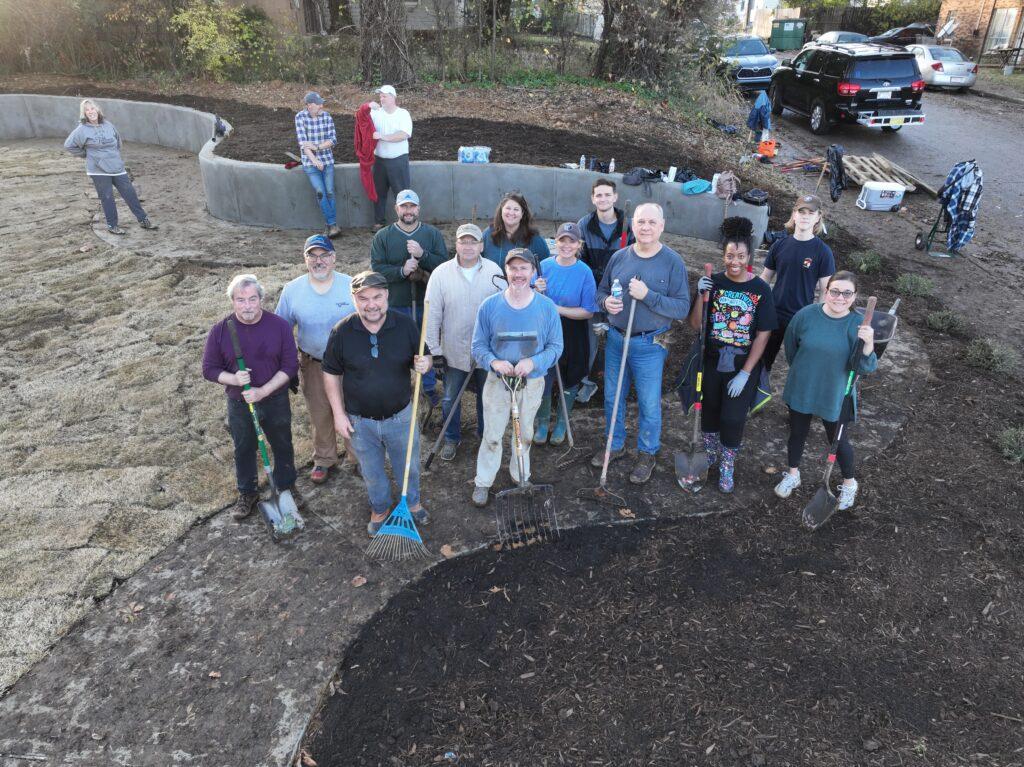
The first step in creating the Tillman Sculpture Park was designing a sustainable site plan and landscape design by HBG Design and Greg Touliatos that could be easily constructed on a small budget with mostly volunteer labor. Montgomery Martin prepared the overgrown site and constructed the concrete path and retaining wall designs. On December 1, a group of 30 volunteers from all organizations came out to implement the landscape design by laying mulch, soil, and sod, and planting bushes around the curving sidewalks before the winter season begins.
“The art and the color will emerge in the spring during the project’s next phase,” says Miller, “adding an even greater metaphorical sense of reawakening, of the site and this meaningful project.”
Art Installations by The Mosaic Arts Apprenticeship Program
Art sculptures, to be placed on cement podiums throughout the park, are being created through the Mosaic Arts Apprenticeship Program at Carpenter Art Garden. under the tutelage of professional artist Suzy Hendricks and professional artist and University of Memphis sculpture professor, Kelsey Harrison. The Mosaic Arts Apprenticeship Program offers Binghampton neighborhood middle and high school students apprenticeship opportunities in mosaic design and construction. Students learn the profession, explore specific ways to approach design, and then begin creating their works of art. In addition to learning a creative skill, students also explore the business aspects of a creative career. The objective is to bolster college and career readiness regardless of their chosen field. Additionally, Binghampton teens and residents will be assisting in making art tiles that will be installed over the curving retaining walls. Art collaborators will also include Art Garden youth and University of Memphis art students.
Project Funding
The project brings together community stakeholders across institutions, sectors, and neighborhoods in a significant collaboration. This project is made possible by the following funders: the Kresge Foundation, HBG Design (in kind), Greg Touliatos (in-kind), Montgomery Martin (in kind), Urban Arts Commission, Moms Demand Action, Everytown, The Little Garden Club of Memphis, and Tennessee Art Commission.
The Binghampton Historical Site
Binghampton's geographical history began as a small town outside of the city of Memphis. Immersed in farmland and railroads, Binghampton resided south of the Pope Cotton Plantation. According to the 1900 U.S. Census, the neighborhood reflects early inhabitants of various backgrounds. More specifically, a Black collective of citizens who worked predominantly on farms and railroads.
We believe that from the complexities of history, a blossom of arts and culture emerged and continues to manifest on the landscapes of Binghampton and throughout the city. Through the birth of Tillman Sculpture Park, Carpenter Art Garden hopes to uncover more of Binghampton’s geographical and anthropological history as we pay homage to joy, wonder, and our creative identity as a neighborhood.
Future Project Phases
The Tillman Sculpture Park project will be phased over four cycles. Future generations of Carpenter Art Garden mosaic students will add to the “Art Garden” for community participation over time.
“We believe it is important for more groups of students to have access to such an incredible real-world collaborative public art project,” adds Miller. “In this way, we are creating a laboratory to home-grow site-specific public artists who are trained in cross-disciplinary collaboration and community-based work. We will also be able to draw on alumni from each group to take leadership roles in future building rounds on the site.”
HBG Design Careers: Why We Stand Out Among the Competition.
It's time to elevate your design career. HBG Design is hiring for several design and project management positions across our Memphis, San Diego, and Dallas offices.
Discover the top reasons why our firm excels in providing exceptional leadership, professional growth, vibrant workplace culture, industry-leading benefits, and rewarding hospitality, entertainment and mixed-use projects.
Here are the Top 7 Reasons HBG Design Stands Out Among the Competition:
1. Design Career Advancement Opportunities.
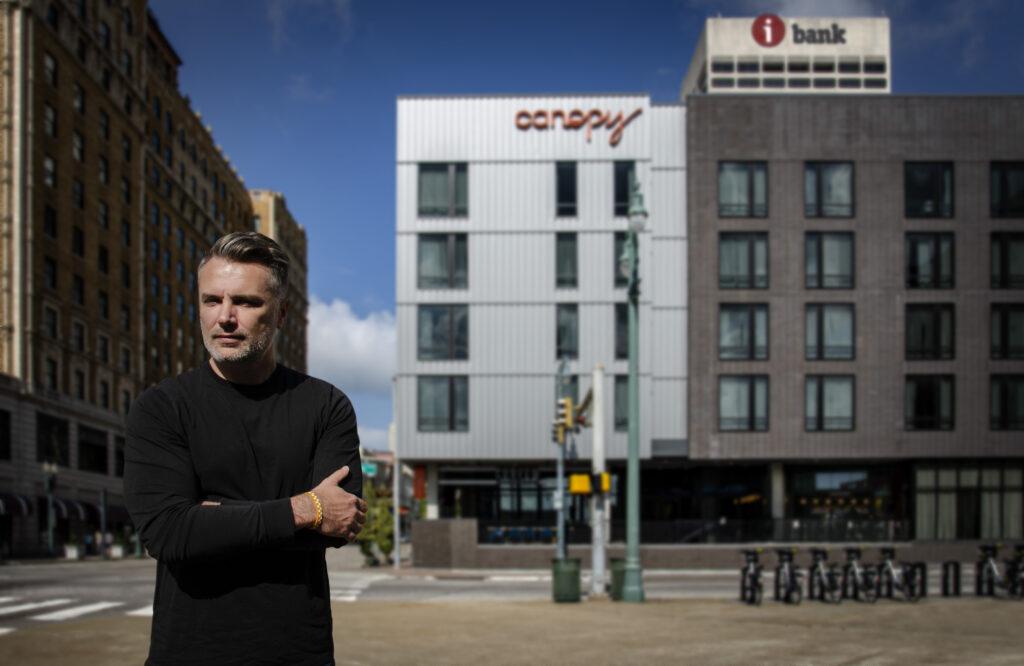
HBG Design’s plan for ensuring the longevity of our firm includes identifying and elevating the talent already in place at HBG Design while guiding our next generation of leaders. Take for example, Kevin, Alexandra, and Chris. Our proactive approach to succession planning celebrates and recognizes excellence in leadership across all aspects of the firm, both on the project and corporate side of the business. Consider the fact that the average length of service of HBG Principals, Senior Associates, and Associates is 15 years. That’s pretty strong evidence of HBG's long-term commitment to developing strong employees and future leaders.
2. Exceptional Leadership.
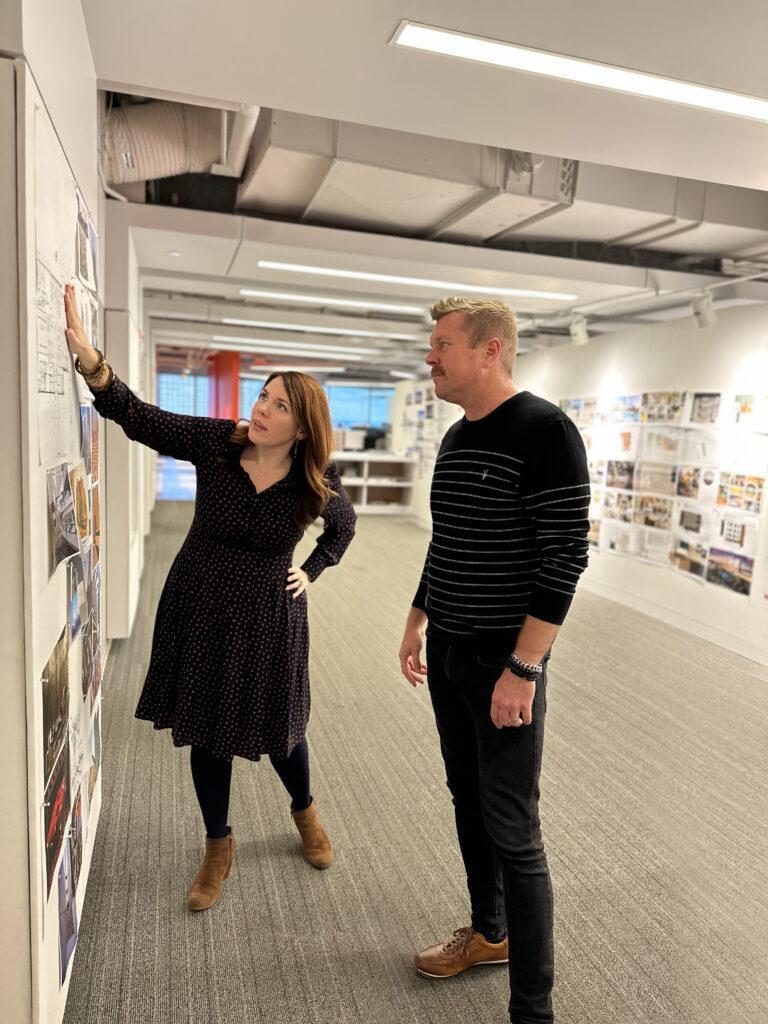
At HBG Design, we believe that exceptional and inspiring leadership is the key to a flourishing workplace. Joe is a great example of this. So is Emily. HBG Design’s leadership team is dedicated to guiding motivated, proactive employees towards success, helping each staff member reach career fulfillment at the highest level. HBG Design fosters a high-performance culture where everyone is challenged to stretch themselves, understand and exceed expectations, and impart leadership in their everyday experiences.
“It’s always been at the core of our firm values to challenge each other to excel beyond what we think we can achieve. We like to say, ‘your path here is what you make of it’, and we aim to empower staff to design their career experience around their strengths and passions. That’s key to our culture; and I think it’s a big reason why we’ve come so far as a company,” says Nathan Peak, AIA, LEED GA, HBG Design Practice Leader.
3. Professional Development Commitment.
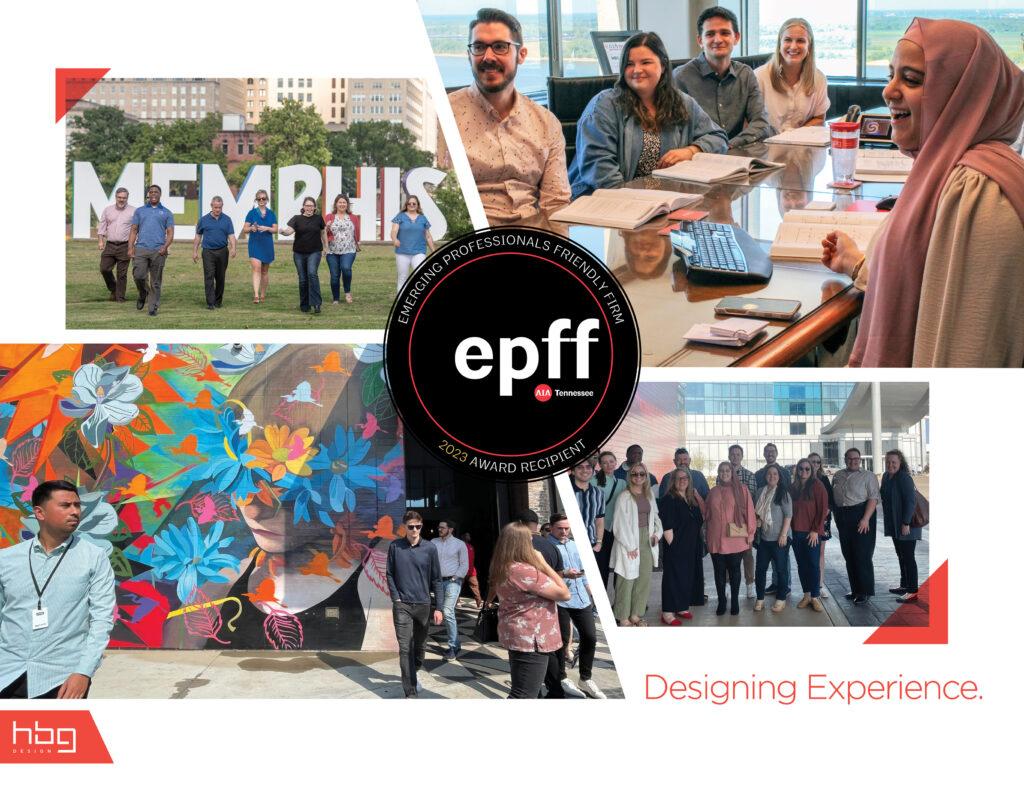
We’re serious about providing the good things that make our employees, and our firm, grow stronger - from helping our staff become better leaders, to initiating robust training curriculums, to finding the latest interactive technologies that help us work smarter. Our fully developed Sponsor Program is crafted to empower our team members to design their own unique career experiences. HBG is consistently honored as an Emerging Professionals Friendly Firm, championing the development of our EP Studio for both emerging interior designers and architects at the firm. Additionally, our leadership hosts firm-wide design-focused forums, morning Coffee Critiques at the crit wall, and activities to maintain a continuous inspirational buzz around the office, while inviting open and meaningful exchanges of ideas and maintaining top-of-mind focus on design excellence.
4. Vibrant Workplace Culture.
HBG Design culture supports and promotes a healthy, flexible, and fun work environment. In each of our Memphis, San Diego and Dallas office locations, we coordinate and host several key events and activities that give every employee the opportunity to interact with their “HBG Design family” inside and outside of working hours. From monthly HBGathers parties, organized community giving events through our Kirk Bobo Creating Impact Grant initiative, painting parties to kick-ball and indoor soccer teams, group nights at new restaurants, to family-centered outings - we believe supporting our community and exploring a variety of outside activities together helps make us a stronger, more dynamic organization.
5. Challenging and Fulfilling Projects.
We love what we do and so does the industry. HBG Design has consistently been ranked among the Top 5 Hospitality and Entertainment Design firms in the Nation by publications such as Hotel Business Magazine and Building Design+Construction. The firm’s 100 architects, interior designers, and project delivery professionals over our three offices are industry specialists who guide our approach to innovation and best practices in every programmatic hospitality, entertainment, and mixed-use design element--from the hotel to the gaming floor, spa, outdoor pool experiences, F&B venues, and event spaces. Our open studios naturally promote engagement and idea sharing and put senior staff in the midst of the design environment where they can teach best practices and impart knowledge to junior staff. Straight from one employee:
“HBG is a family of people who come together — some with a lot of experience and some with less experience; we collaborate, mentor, draw, and share ideas as we contribute our unique talents to the firm’s high-quality, high-caliber design projects.”
6. Industry-Leading Compensation and Benefits.
To encourage a healthy work/life blend across the firm, we offer a well-rounded benefits plan, year-round flexible hours for all employees, and a variety of programs designed to support the important blend between life, health, work, and play. HBG offers a flexible work week, industry-leading paid time off and holidays, a discretionary bonus plan, licensure/certification exam reimbursement, professional membership reimbursement, and more. The firm’s extensive benefits package includes medical, dental, vision, flexible spending account, 401k plan, and an employee assistance program. HBG Design has been lauded for its business approach and commitment to employee growth and development, winning 10+ ‘Top Workplace’, ‘Best Place to Work’ and ‘Hot Firm’ Awards, and four national awards for operations management and employee engagement.
7. Rewarding Outstanding Accomplishments.
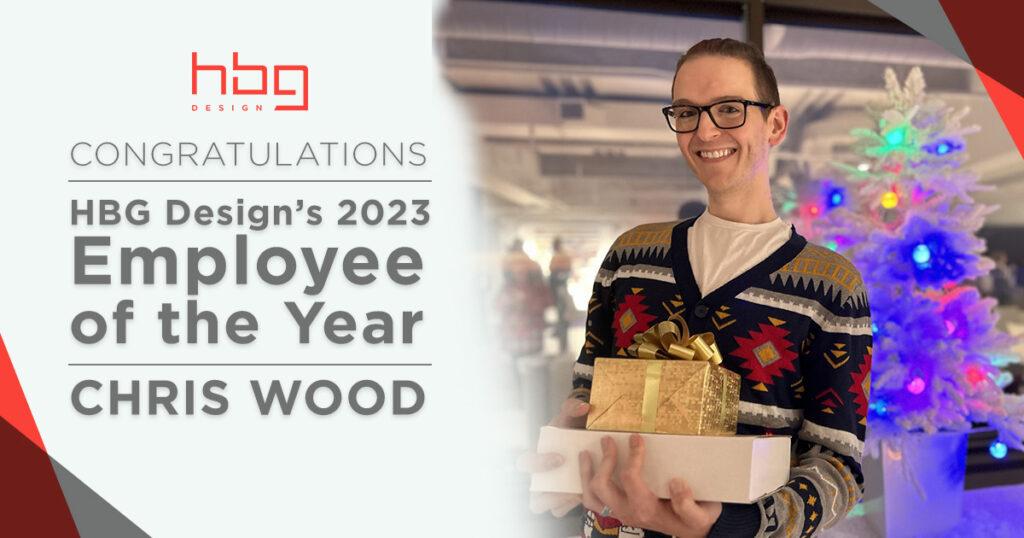
HBG’s greatest strength is our people, those that drive both the creative and the business sides of our firm. We encourage a self-motivated spirit. Rewarding talented members of our team who have dedicated themselves to their and the firm’s success is an important aspect of our culture. We take pride in acknowledging the exceptional work of our employees. Through industry-wide recognition and our own internal awards, we celebrate your achievements and ensure your efforts are recognized.
So, what do our employees have to say about us?
Annually, our company conducts an all-encompassing employee engagement survey, offering vital insights that shape HBG Design's people-centered strategies. Here are select excerpts reflecting our employees' experiences at HBG Design: 

If you have been yearning for a change that addresses these factors head-on, then now is the time to join our extraordinary team.
Apply today for our open architecture positions and embark on a fulfilling career journey at HBG Design!
Visit our Design Career Page!
Design Thinking: Resort Experiences for the Group Traveler
6 Best Practices for the Design of conference event amenities influenced by the preferences of meeting planners, and the attendees they represent.
Designing Experiences for the Group Traveler, By HBG Design, with insights from Conference & Meeting Planner, Grace L. Jan, CMP, CAE, Director, Sales Operations and Corporate Events, Supernus Pharmaceuticals. Jan is a Maryland-based conferences and meetings planner with 35 years in corporate events.
At HBG, we are designing experiences that extend the group traveler's resort journey beyond the conference/event center.
 Multi-purpose convention, conference and performance event amenities have become important economic drivers for resort Owners looking to round out their revenue generating opportunities. After years of remote work and employee separation, businesses are starting to find ways to bring their employees together, and regional resorts can offer fun and convenient locations to host business gatherings and meetings. At HBG, our event amenity designs for the group traveler have garnered national recognition as being well-designed, exciting, and flexible spaces that are also operationally and financially successful.
Multi-purpose convention, conference and performance event amenities have become important economic drivers for resort Owners looking to round out their revenue generating opportunities. After years of remote work and employee separation, businesses are starting to find ways to bring their employees together, and regional resorts can offer fun and convenient locations to host business gatherings and meetings. At HBG, our event amenity designs for the group traveler have garnered national recognition as being well-designed, exciting, and flexible spaces that are also operationally and financially successful.
After we successfully completed the stunning designs of the Gaylord Palms Resort and Convention Center in Orlando, FL, and the Gaylord Texan Resort and Convention Center in Grapevine, TX, HBG Design adopted our guest-focused design philosophy. We create event amenities that cater to the needs of both meeting attendees and planners, focusing on seamless accessibility and easy navigation to a diverse range of revenue-generating experiences.
When it comes to hosting successful events of all sizes, the design of multi-purpose resort spaces that can "multi-task" between business and leisure resort guests is paramount. Group travelers typically visit resorts during mid-week for conferences, trade shows, and meetings. They want services and spaces that support networking, relationship-building, learning, entertainment, and relaxation, requiring a variety of amenity options and wayfinding clarity to allow the group traveler's experience to extend beyond the conference and event center.
When it comes to choosing a conference event resort for their attendees, meeting planners have specific preferences and “must-haves” on their checklists. These insights can help resort Owners and designers target experiences that resonate with event guests:
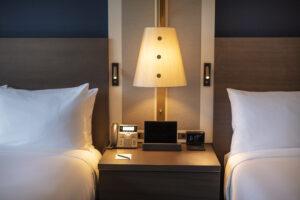
1. High-quality service and convenience.
Regardless of the age of the hotel, delivering exceptional service is crucial. The first impressions made by bellmen and front desk staff significantly impact attendees' experiences.
To aid service and guest convenience, many newer properties are facilitating faster check-ins through technology such as their hotel apps, allowing guests to use their smartphones as room keys. This streamlined process enhances efficiency and improves guests' overall experience. In-room iPads to help enhance on-demand service from the resort is also an important feature, as seen at Oaklawn Racing and Gaming Resort, Hot Springs, Arkansas (images at left and right).
2. Ease of wayfinding access between the hotel and the event amenities is a priority.
HBG designers often plan our clients' resorts so that the hotel elevator lobby is located at the central point between each amenity element, making use of horizontal and vertical circulation. For example, at Four Winds Casino Hotel and Spa in South Bend, Indiana, HBG designers situated the main elevator lobby between the hotel registration desk and the main escalator access to the Ribbon Town Conference and Event Center. The elevator also takes group travelers directly to the second level event pre-function lounge, and continues upward to the third floor hospitality suites and the hotel's Edgewater Café bar and restaurant. This third level was planned and designed as break-out reception and gathering space in support of the resort's event activities.
3. Approachable comfort and luxury.
To ensure the comfort of group travelers, guestroom designs should prioritize approachable luxury, offering a variety of room layouts, selections and premium amenities, including quality bedding, toiletries, and luxuriously appointed bathrooms. Features like choices of pillow types, and complimentary robes and bottles of water in guestrooms go a long way in enhancing comfort.
 4. Functional meeting spaces and audio-visual technology
4. Functional meeting spaces and audio-visual technology
To attract and retain repeat meeting planner business, your event amenities must offer well-designed, flexible meeting spaces of diverse sizes and configurations to cater to a range of meeting needs. Outdoor landscaped event patios, terraces or lawns also offer distinct areas for gathering, weather permitting.
The Ribbon Town Conference and Event Center at Four Winds South Bend has strategically utilized the entire second floor to cater to both informal and formal gatherings. This includes areas for networking before events, with seating groups, two bars and an outdoor terrace, as well as designated spaces for formal meetings. To allow for flexibility and accommodate multiple groups, the smaller meeting rooms are located at the opposite end of the conference and event center from the main 10,000 SF ballroom. Additionally, the ballroom can be divided to create smaller meeting room spaces when needed. The planning and design of all areas have been well thought out with integrated A/V technology to enhance the space's suitability for high-end conferences and events.
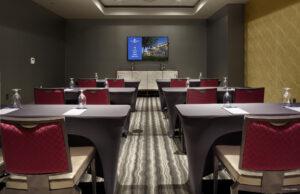 Establishing a strong partnership with a resort's in-house AV is essential for meeting planners. Offering reasonable prices for audio-visual services and packages will make a resort stand out to obtain more group business. Additionally, addressing the basic need for complimentary Wi-Fi for all guests and groups will differentiate a resort and boost its appeal for group bookings. By organizing focus groups with experienced meeting planners, resorts can gather valuable insights on necessary improvements in service and for upcoming renovations or new build projects.
Establishing a strong partnership with a resort's in-house AV is essential for meeting planners. Offering reasonable prices for audio-visual services and packages will make a resort stand out to obtain more group business. Additionally, addressing the basic need for complimentary Wi-Fi for all guests and groups will differentiate a resort and boost its appeal for group bookings. By organizing focus groups with experienced meeting planners, resorts can gather valuable insights on necessary improvements in service and for upcoming renovations or new build projects.
5. Enhanced food options.
Resorts are focusing on offering better food options in their outlets, catering to attendees' varying dietary preferences and needs for grab and go snacks, bars and lounges for informal F&B centered meetings, and higher end F&B for both intimate and group dining. Additionally, coffee break and break-out areas are crucial in providing attendees with private spaces for networking and respite between sessions. This helps create a more inclusive environment and enhances the overall satisfaction of meeting attendees.
The group traveler to Oaklawn Racing and Gaming in Hot Springs, Arkansas, can partake from a number of restaurant offerings within reach of the event space--from the food court concourse, to the high end Bugler restaurant and First Turn bar, and The OAK Room and Bar. Oaklawn, with its unique dining offerings, makes for a unique conference and meeting location due to its 100+ year history of thoroughbred racing, an upscale design with convenience on a walkable scale, and views to the racetrack and Hot Springs' beautiful landscape beyond.
 6. Mindfulness and well-being amenities.
6. Mindfulness and well-being amenities.
As more guests incorporate mindfulness into their lives, a resort’s event amenities must adapt by providing different spa offerings and promoting spaces for relaxation. On-site spas can provide much-needed relaxation experiences after long days of sessions and networking events. Features like healthy menus, spas and fitness classes, and even in-room yoga mats or Peloton bikes offer a touch of home while traveling. Oaklawn's Astral Spa and Four Winds South Bend's Cedar Spa are both luxuriously designed spas near to the conference/event center and hotel amenities of each resort, offering full spa services and relaxing aqua thermal and lounge spaces.
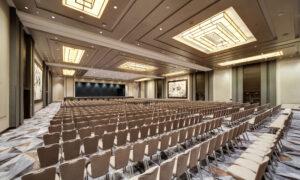 Understanding the top amenities desired by meeting planners and attendees is essential for both new resorts and established properties looking to attract and retain business. Resorts can secure a competitive edge in the convention/conferences/meetings market by prioritizing excellent service, well-designed meeting spaces, competitive AV services, and catering to emerging trends. By doing so, they can create a memorable experience for meeting attendees, encourage repeat visits, and foster a desire to recommend the resort to others, including other meeting planners.
Understanding the top amenities desired by meeting planners and attendees is essential for both new resorts and established properties looking to attract and retain business. Resorts can secure a competitive edge in the convention/conferences/meetings market by prioritizing excellent service, well-designed meeting spaces, competitive AV services, and catering to emerging trends. By doing so, they can create a memorable experience for meeting attendees, encourage repeat visits, and foster a desire to recommend the resort to others, including other meeting planners.
Represented projects include:
The Event Center at Oaklawn Racing and Gaming Resort, Hot Springs, Arkansas, Photography © Dero Sanford/Think Dero Photography
Ribbon Town Conference and Event Center at Four Winds Casino Hotel and Spa, South Bend, Indiana, Photography © Dero Sanford/Think Dero Photography
The Guest House at Graceland Resort Conference and Event Center, Memphis, Tennessee, Photography © Jeffrey Jacobs Photography
The Conference and Event Center at Sycuan Casino Resort, El Cajon, California, Photography © Chad Mellon Photography
Creating Physical Connections: Sylvamo Global Headquarters
Sylvamo, a top global paper company employing more than 6,500 people worldwide, is focused on creating connections that only paper can foster. The company’s new global headquarters in Memphis, Tennessee, is designed to reflect its commitment to providing its employees with a balance of collaboration and privacy, a space with a strong sense of branding and cultural identity.
The clean, modern office design features a neutral color palette that allows the treescape views to shine as a major player in the design story.
Muted tones of Sylvamo’s signature purple brand color highlight key spaces. A large custom painting in the lobby features an abstract design that flows well with the connection to nature and the contemporary brand. The Sylvamo Global Headquarters regularly hosts international staff and visitors, and the office’s boardroom is equipped with an elegant white marble table and privacy measures for business meetings, including electronic frosted glass interior walls that can be clear or opaque depending on the level of privacy necessitated.
Light-Filled Work Spaces
A repeating baffled ceiling element runs from the entry lobby through office wayfinding paths and collaboration spaces to symbolize forward motion while echoing Sylvamo’s logo design.
A hint of industrial inspiration is provided from the open mechanical ceiling plane that serves to elevate the office height for an open feel.
Every Memphis-based employee has a universally sized workstation or semi-private office with adjustable height desks, and access to multiple open and closed collaboration spaces throughout the workplace.
Workstations are located along the exterior floor to ceiling window walls allowing light to permeate through the main spaces into the internal glass fronted offices at the nucleus.
In-Person Collaboration
Situated in an existing Class B office building, the office floor plan enables various open and closed workspace and collaboration zones for employees and leadership who work on hybrid office schedules.
Formal and Informal Break-Out Spaces
Because most employees work on hybrid schedules, the office space is designed to be highly collaborative with numerous styles of formal and informal break-out brainstorming and meeting spaces.
Each of the Sylvamo Global Headquarters' three floors contain a Work Cafe that honors the Memphis location, named Soulsville, Beale, and Graceland, respectively. These café hubs serve as central, informal gathering areas, providing counter seating and dining table seating, and can be opened to collaboration areas to accommodate events. These floating kitchenettes are located at the angular building’s end point and their geometric configurations help maximize space and flexibility during events.
‘Sip and Print’ stations are the office’s printer kitchenette break out spaces. Each ‘Sip and Print’ is centrally located for ease of access and wayfinding for guests.


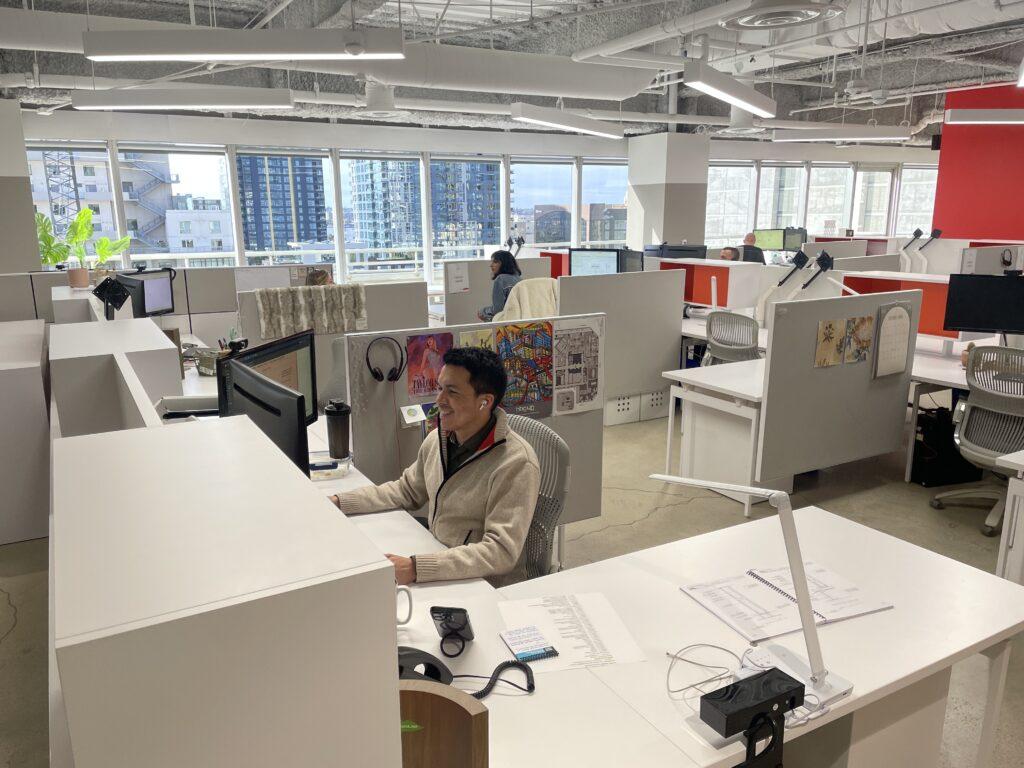

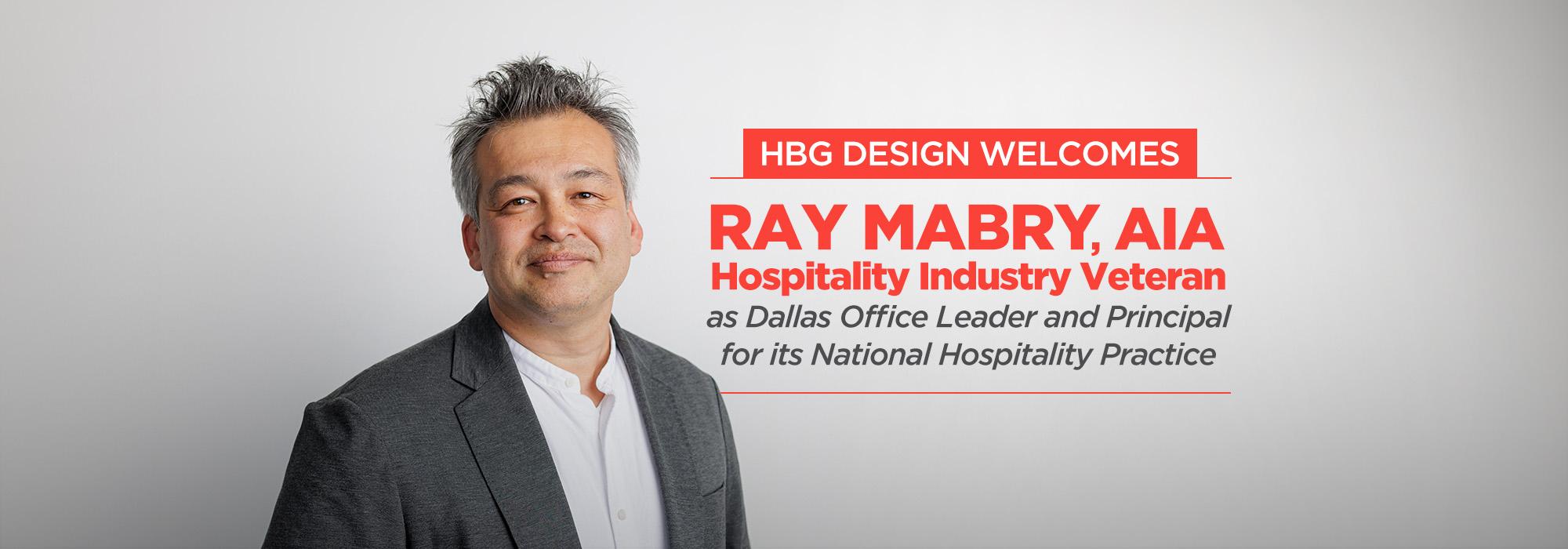
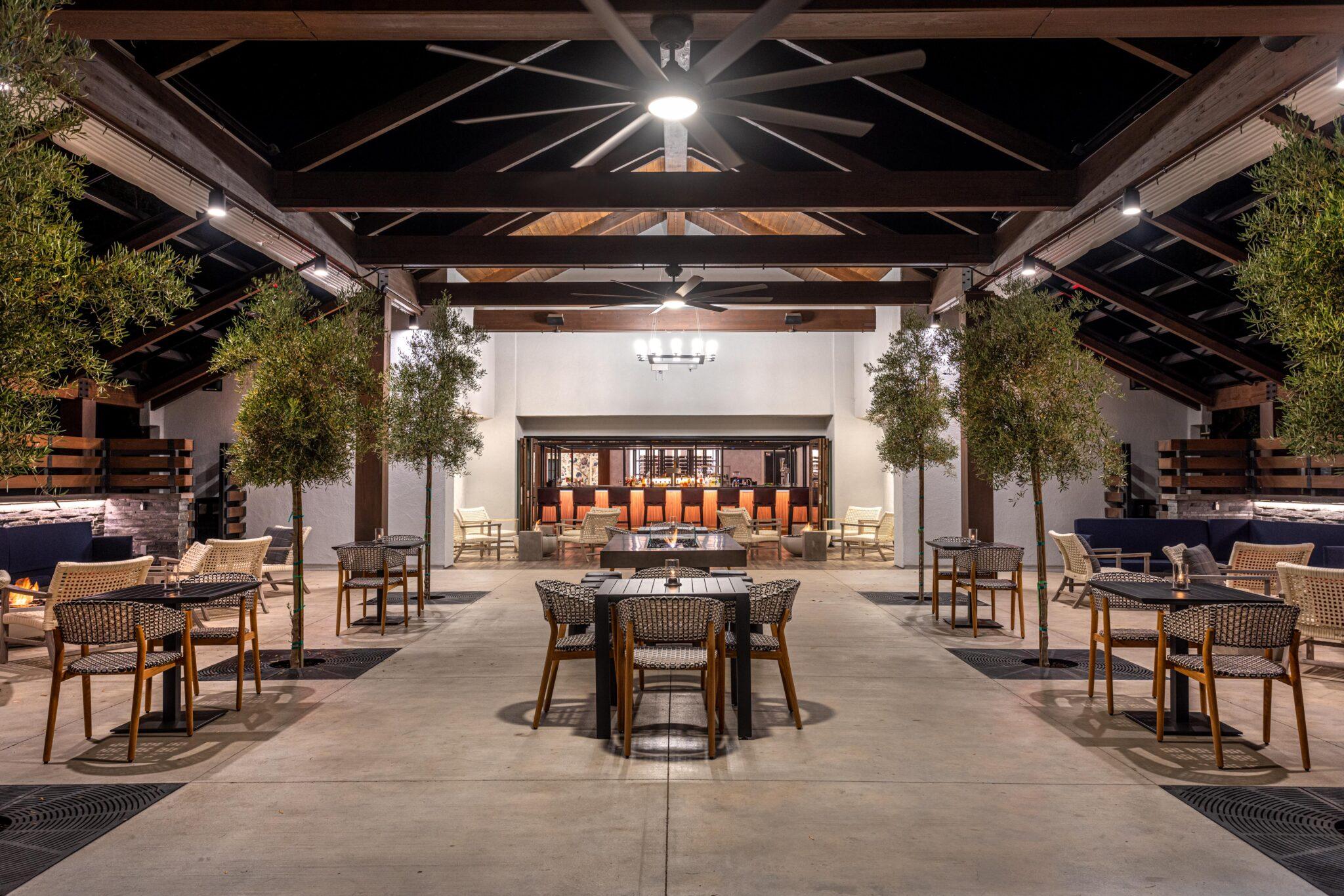
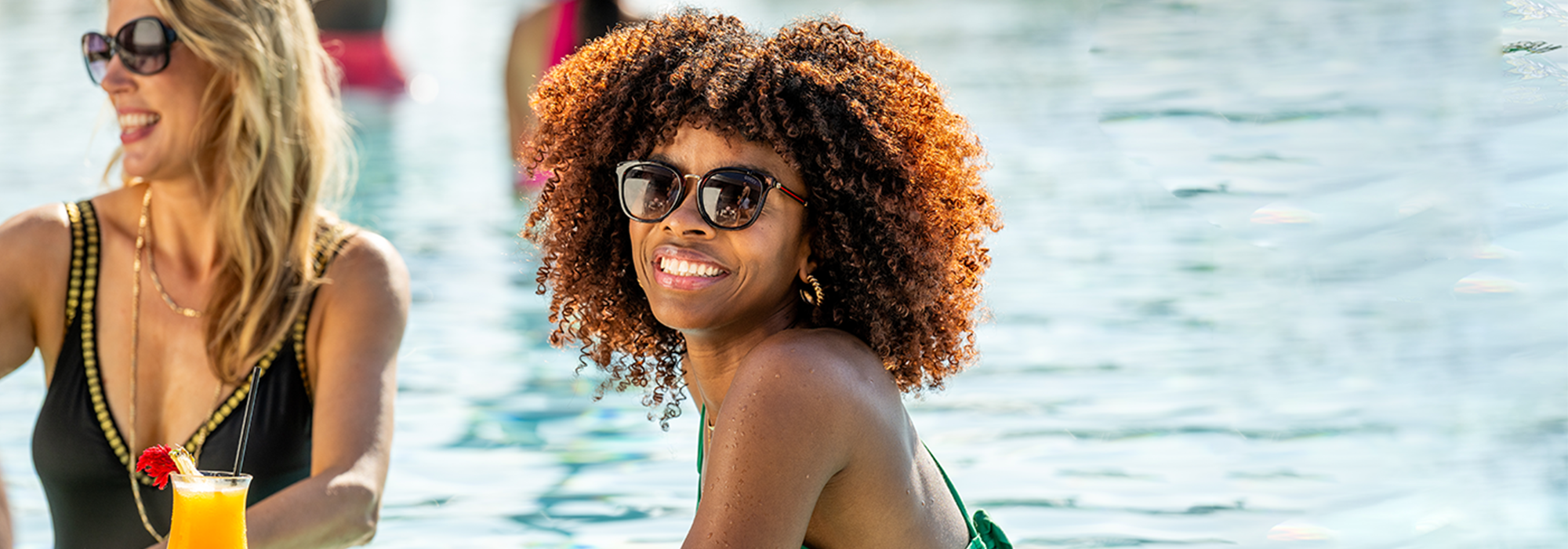
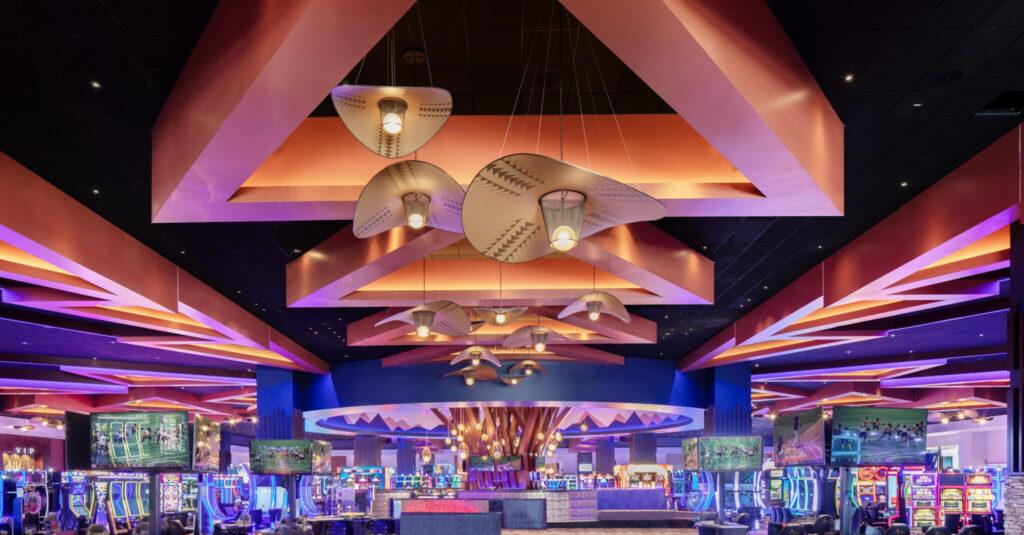
 We understand that guests in search of a getaway crave enticing amenities. Our resorts feature immersive pool experiences, on-site concert venues, and world-class spas. In-house concert venues inject an exciting energy, providing a dynamic live entertainment component that enhances the overall resort experience.
We understand that guests in search of a getaway crave enticing amenities. Our resorts feature immersive pool experiences, on-site concert venues, and world-class spas. In-house concert venues inject an exciting energy, providing a dynamic live entertainment component that enhances the overall resort experience.